June 2023
fintechmagazine.com

FINTECH UNICORNS
THE ROYAL MINT: INSIDE THE TECH-LED REINVENTION OF BRITAIN'S COIN MAKER
SUNRISE BANKS: IMPROVING CUSTOMERS' LIVES THROUGH MISSION-DRIVEN LENDING

June 2023
fintechmagazine.com

FINTECH UNICORNS
THE ROYAL MINT: INSIDE THE TECH-LED REINVENTION OF BRITAIN'S COIN MAKER
SUNRISE BANKS: IMPROVING CUSTOMERS' LIVES THROUGH MISSION-DRIVEN LENDING
We speak to Saphyre Founders the Roche brothers, who run through ways traders can gain a competitive advantage using AI-powered tools








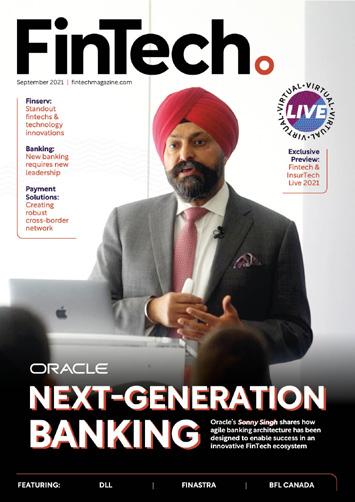


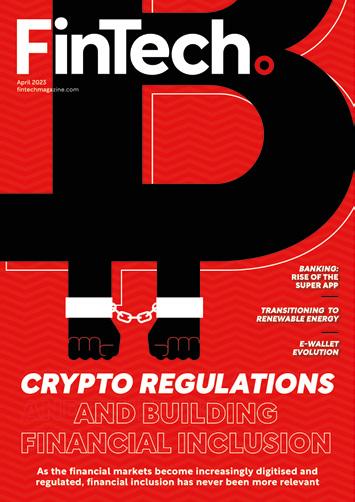






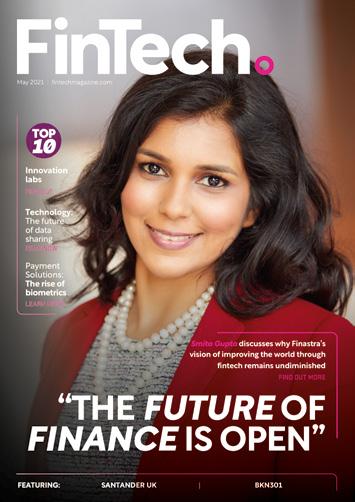












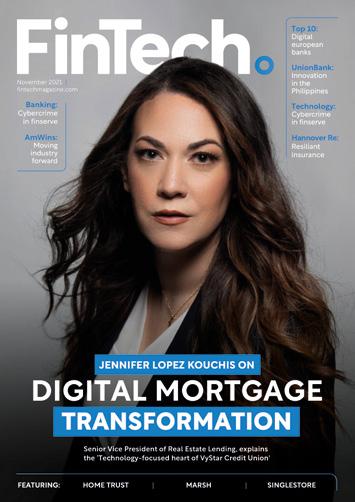




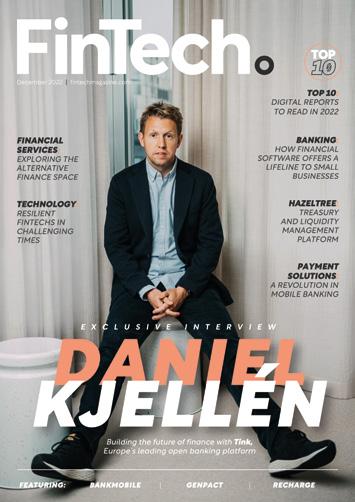















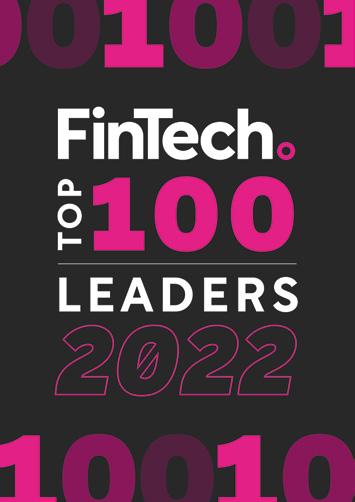

FinTech magazine is an established and trusted voice with an engaged and highly targeted audience of 2,000,000 global executives
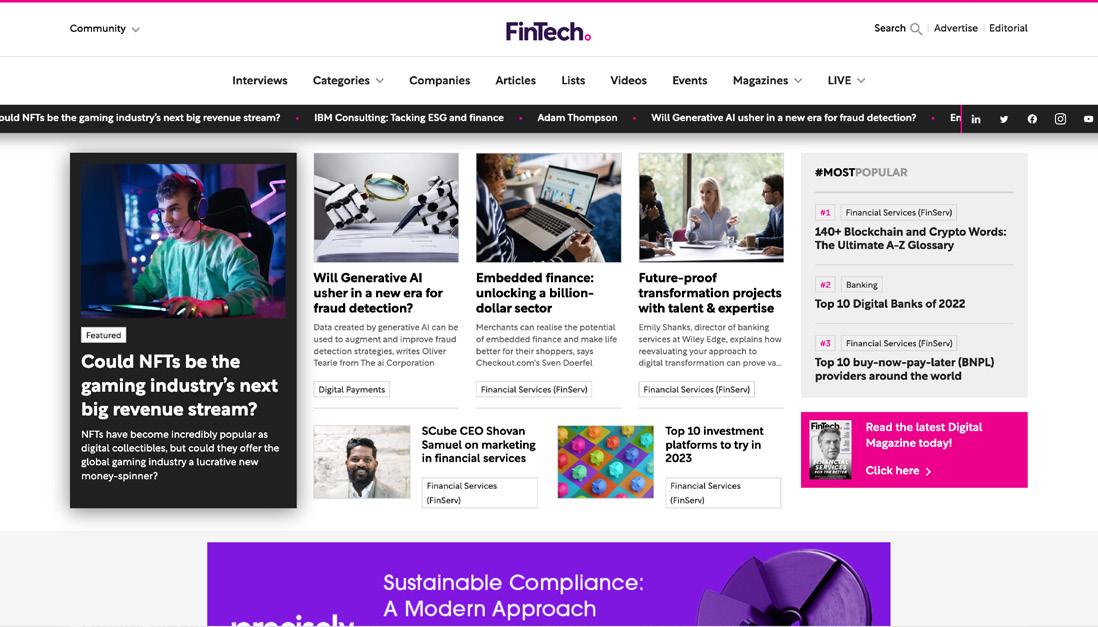

Digital Magazine



Website Newsletters

Industry Data & Demand Generation

Webinars: Creation & Promotion
White Papers & Research Reports
Lists: Top 10s & Top 100s
Events: Virtual & In-Person

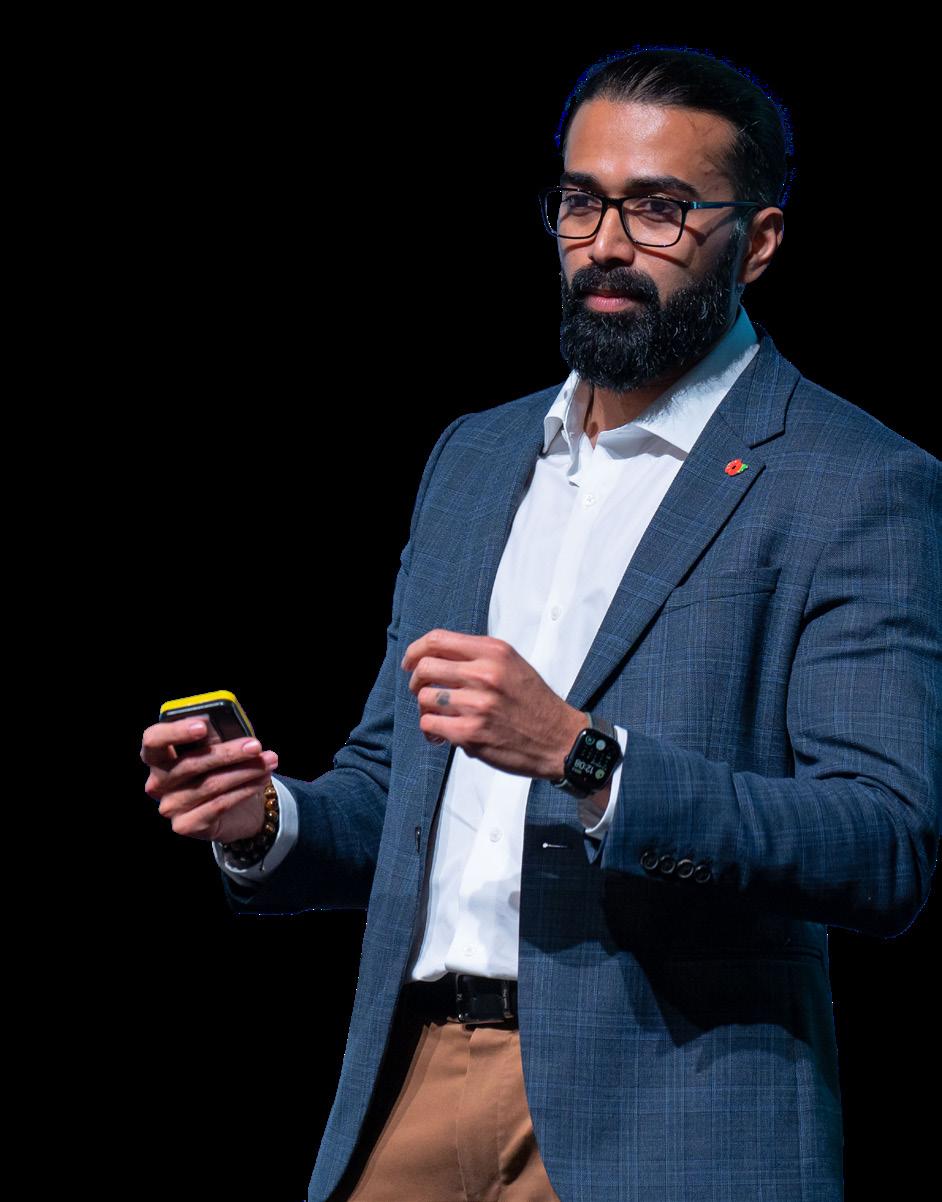
WORK WITH US




Finance is so integral to our daily lives that it really is a privilege when consumers choose to bank, or move money, or settle bills with any one fintech solution. But with great power comes great responsibility
Customers trust us to keep their data secure, offer reliable financial services, and never step beyond their expectations of data sharing or data custody.


These themes are central to the June issue of FinTech Magazine, where we have a feature on customer data platforms. There is a fine line when it comes to the amount of data that customers are prepared to dispense – not just for data privacy reasons, but because more data fields slows down the onboarding process and puts off customers. Yet fintechs and other service providers need to gather information on their users to offer a personalised service.
In this issue, we also explore the world of responsible finance. In today’s uncertain economy, responsible lenders are more crucial than ever. They are less focused on margins than their mainstream counterparts, yet this integral part of their mission is something that increases their exposure to risk and makes them vulnerable to fluctuations in the market. We find out not only how they’re coping, but how they’re thriving.
We hope we can give you a brief respite from your week. Take a weight off and enjoy flicking through the June issue.
ALEX CLERE“THERE IS A BALANCE BETWEEN NOT COLLECTING TOO MUCH DATA, AND NOT PERSONALISING SERVICES ENOUGH”








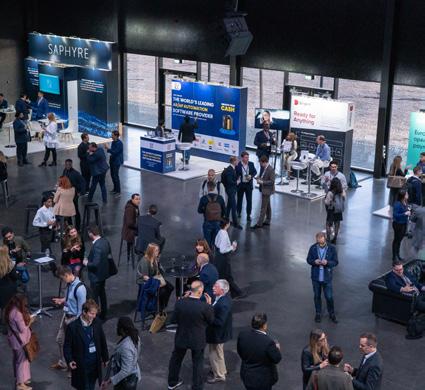
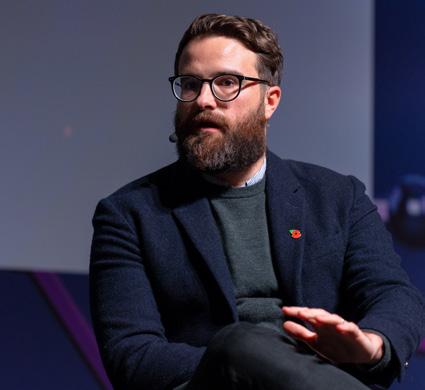
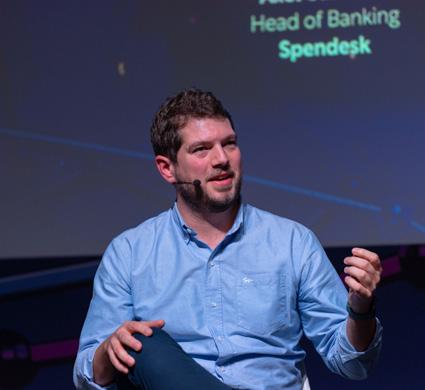








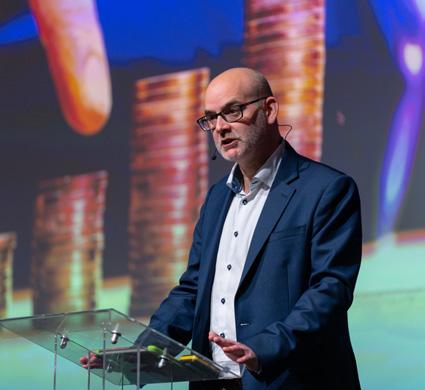


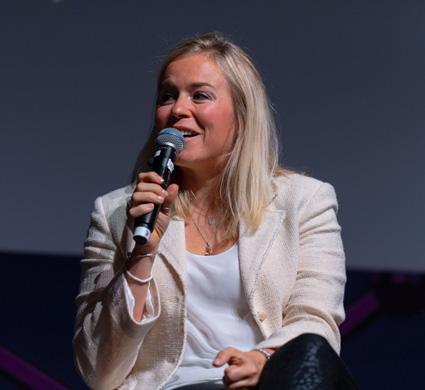
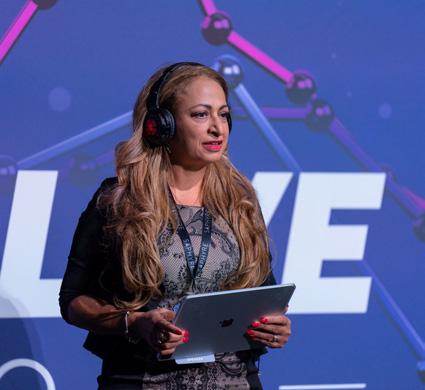
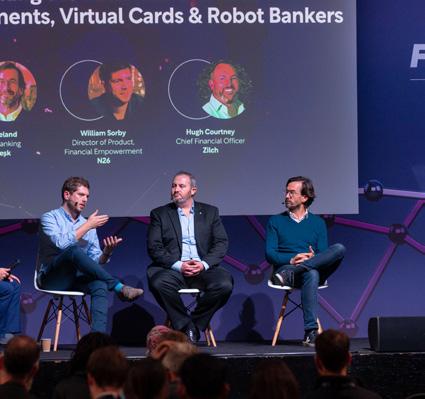





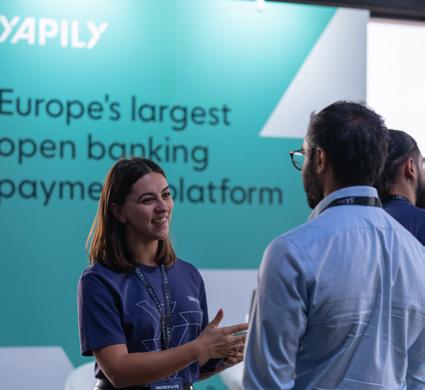

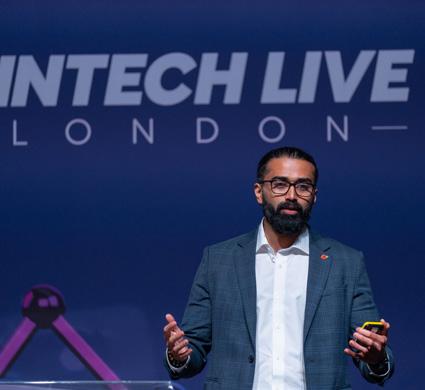

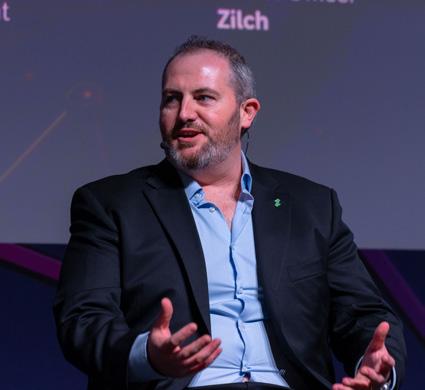





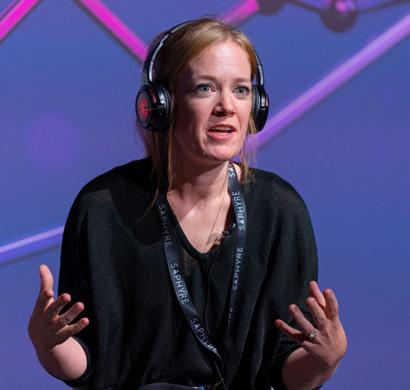

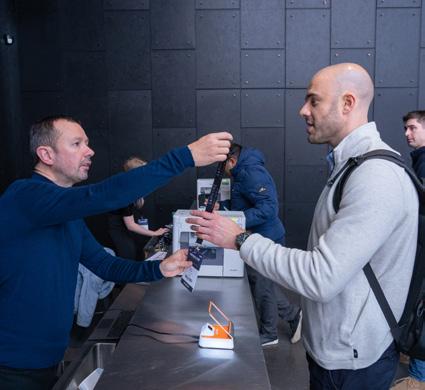




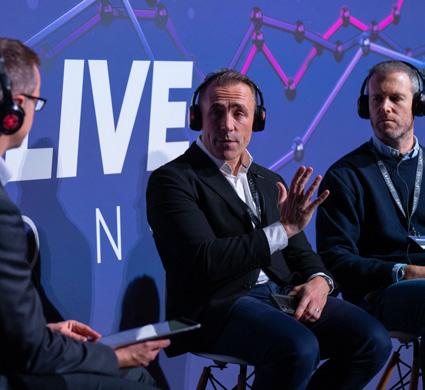


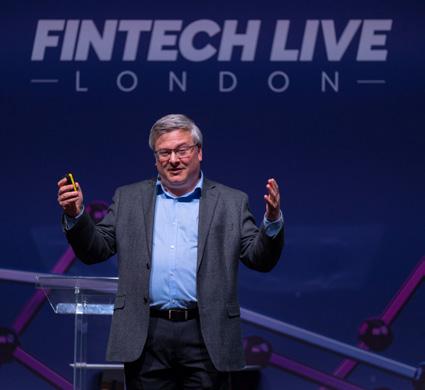
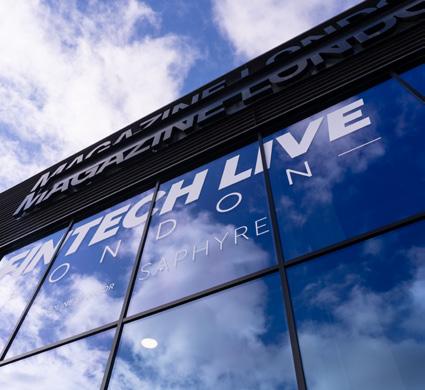

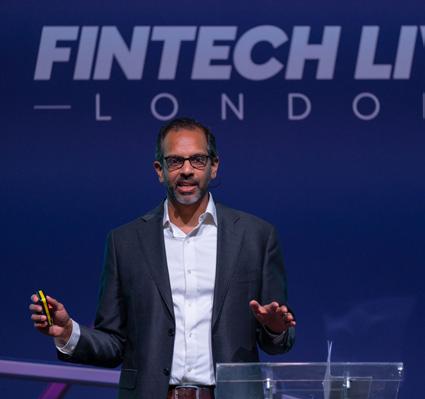


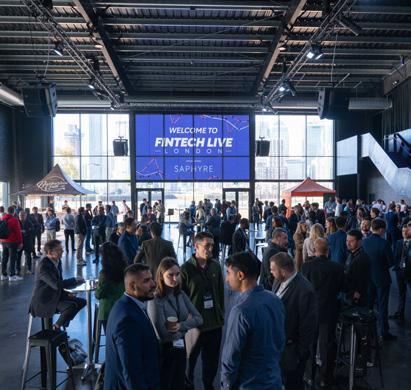
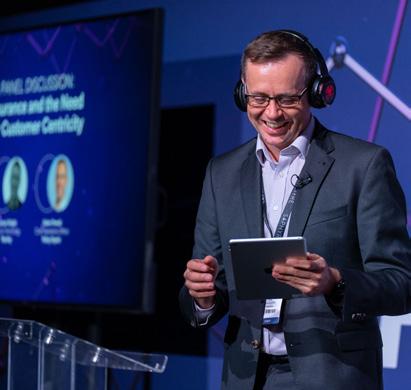





The Backbase Engagement Banking Platform is the evolution of digital banking.
Built for fast implementation and ease-of-use, the platform allows financial institutions to rapidly deploy digital solutions that delight customers and empower employees.
With the power of one platform, you can:
Engage your customers
Create tailored customer journeys from account signup to product up-sell
Empower your employees
A 360° view of your customer helps you deliver personalized and instant service
Ready to get the full picture?
Talk to our specialists
Leverage a composable architecture
Select best-of-breeds partners for your perfect end-to-end solution
Reduces overhead and drive greater innovation with our cloud model.

Start small, grow big Future-proof digital solutions can be customized to your needs now, then scaled later.
This advertisement can only scratch the surface of what the Backbase Engagement Banking Platform can do for your business, employees and customers.
Ready to get the full picture?
Function as an agile workforce to fast-track consumer innovation
German Chancellor Olaf Scholz was joined at an EU summit by fellow eurozone leaders in meeting Christine Lagarde, Head of the European Central Bank (ECB), to discuss concerns about European banking’s stability following the collapse of Silicon Valley Bank and the takeover of Credit Suisse.
For Scholz, stringent rules and regulations imposed in the EU have kept “the banking system stable” and, despite the fact his native Deutsche Bank saw shares tumble 14% at one point in March 2023, there is “no cause for concern”. Whether a tactic to allay market fears or a genuine assessment, Scholz’s words were backed by a summit consensus that the European banking system remains safe for now.



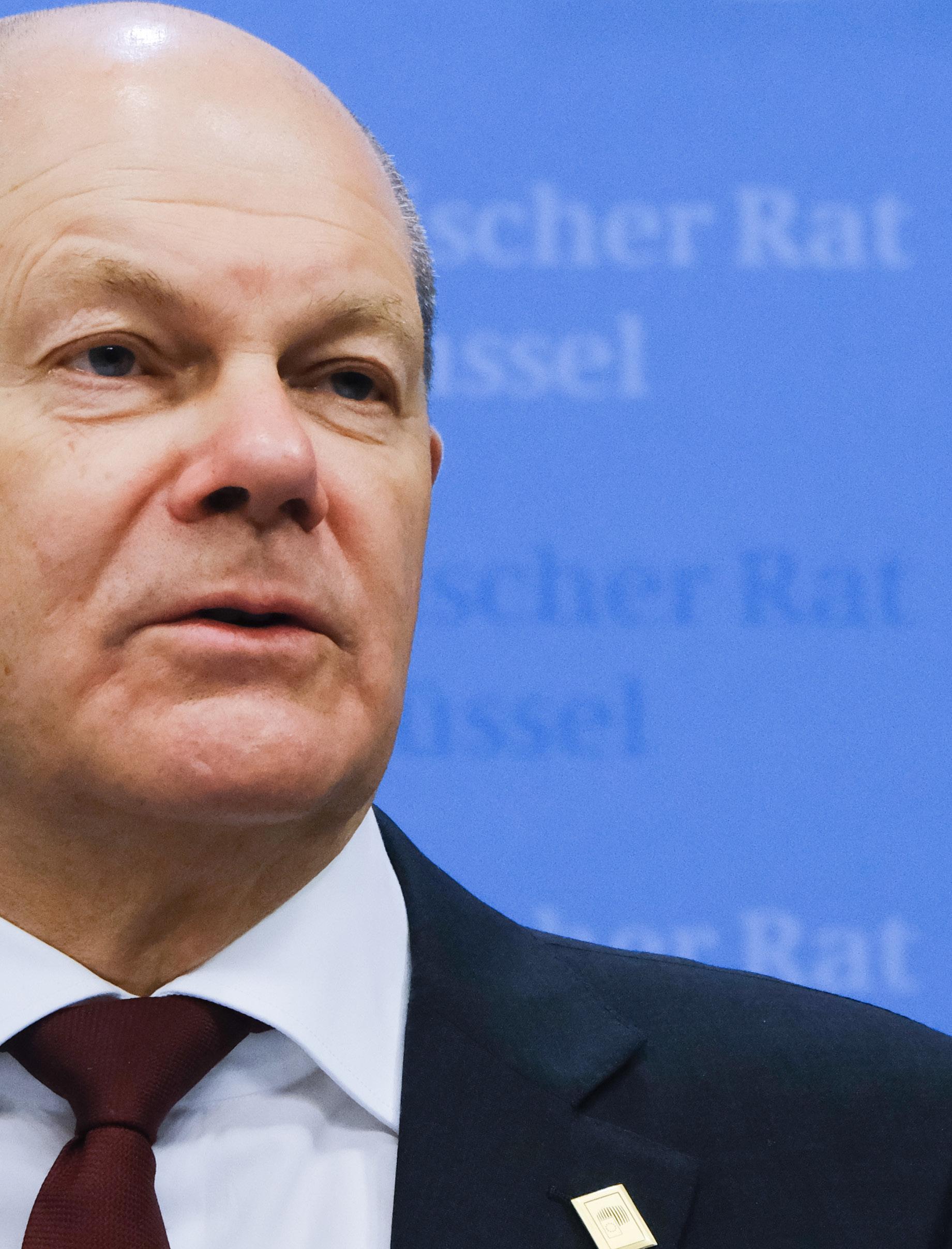



TITLE: CEO AND CO-FOUNDER

COMPANY: STRIPE

INDUSTRY: FINTECH
Patrick Collison is an Irish billionaire entrepreneur known as the co-founder and CEO of Stripe, a fintech unicorn that offers financial services to ecommerce. His brother, John Collison, is his fellow co-founder and the acting president of Stripe. The brothers hail from County Tipperary, Ireland, and jointly head the company out of San Francisco and Dublin. John has an estimated net worth of $11.4bn and Patrick a net worth of $5.5bn.
Self-made millionaires from their early teens, the Collison brothers have faced a meteoric rise to the top of the fintech industry with their company, Stripe
Patrick & John Collison are the renowned sibling duo who co-founded fintech’s highest-valued company, Stripe.

Founded in 2009 – when they were but 21 and 19, respectively – both Collisons’ net worth exceeded $1bn before they’d even reached 30. Receiving a market valuation of US$95bn at the end of 2022, Stripe is now the world’s leading fintech company. But how did the brothers get there?
Born in Dromineer
Raised in Dromineer, a small town in Ireland’s County Tipperary, it’s almost fitting that the tech-giant siblings grew up with limited access to the internet, needing the help of satellite links to access the world wide web. As such, the internet represented “a connection to the greater world” for Patrick and “had a lot of significance”.
Despite the disadvantage, the brothers showed signs of success in tech from an early age. Patrick was taking computing courses at the University of Limerick aged eight, before going on to win the 41st Young Scientist and Technology Exhibition award at 16 for his LISPtype programming language software, Croma.
Starting up
Patrick and John set up the software company Shuppa aged 19 and 17 respectively in Limerick. In need of funding, the brothers had no luck with Enterprise Ireland but did receive interest from Y Combinator, of Silicon Valley.

Shuppa was then merged with the startup of two Oxford graduates, Harjeet and Kulveer Taggar, becoming Auctomatic – a softwareas-a-service platform allowing big sellers on eBay to track inventory and traffic. The quartet also developed an iPhone app to provide an offline version of Wikipedia, before the company was sold to Live Current Media for $5mn in March 2008.
Becoming teenage millionaires, Patrick dropped out of the Massachusetts Technology Institution to take on the role of Auctomatic’s director of engineering. It was at this point, following the brothers’ experiences with Auctomatic, that “the online payments industry was an unusually compelling example of an entire industry that is going to have its lunch eaten”.
The brothers had already found a gap in the market by finding solutions for big eBay sellers, so in 2010 they did it again with Stripe, simplifying payment acceptance on any app or website without the need for ecommerce operators to obtain licences or strike deals with various banks. Stripe did it all for them, levying a 2.9% fee in return.
“We’re not a glamorous business, just an infrastructure company that, hopefully, we’ll be able to compound for a long time”
There were early admirers, too, with PayPal co-founders Elon Musk and Peter Thiel investing $2mn in Stripe alongside investment firms SV Angel, Sequoia Capital, and Andreessen Horowitz in 2011.
The Collison brothers would only have to wait five years before becoming the world’s then-youngest self-made billionaires after investment from Capital G and General Catalyst Partners took the company’s valuation up to $9.2bn – taking their net worth to a respective $1.1bn in 2016.
The investment didn’t stop there, with a further $150mn funding round raising the Collisons’ worth to $3.2bn the following year. And, in 2019, investments of $250mn saw Stripe’s valuation soar to $35bn.
Notwithstanding the unprecedented growth rate of the company, John said to the Irish Independent in 2020: “We're still quite early in Stripe’s journey. And when

“The online payments industry was an unusually compelling example of an entire industry that is going to have its lunch eaten”

I say that, you might roll your eyes, given that we've been at this for 10 years. But we’re still growing at quite a fast rate and still investing very heavily in future growth.”
This rate of expansion appears to have accelerated faster than either sibling expected: in 2022, Stripe received a public valuation of $95bn – more than double its worth just three years prior.
Despite Stripe’s rise to become the gold standard of fintech unicorns, Patrick and John have been keen to uphold the company’s core values. “We’re not a glamorous business, just an infrastructure company that hopefully we’ll be able to compound for a long time,” Patrick told Forbes.
Words are nothing without action, and the Collison brothers keep to their modest selfassessment of business management with a hands-on approach. Both still review every product launched and complete friction logs to ensure the user experience of their payment solutions remains a friendly one.
Philanthropy, too, has been core to the Collisons’ ethos as fintech billionaires. Their company contributed $1mn to the prohousing-development lobbying organisation California YIMBY and offers a fee discount to non-profit organisations.
Though the company’s growth rate may have been overvalued – with its latest round of funding in 2023 pricing Stripe at $50bn, as opposed to the $95bn market valuation touted in 2022 – it’s clear that Stripe remains the largest fintech in the world. And, if the Collisons are to be believed that Stripe is still in its early days, then it will surely remain in the upper echelons of the fintech unicorn table for some years to come.

The investor, Saxo Bank founder, and Concordium blockchain pioneer talks to us about emerging technology, the startup experience, and why he gave up his dream of becoming an archeologist
Q. DESCRIBE YOUR ROLE AND YOUR BACKGROUND. HOW DID YOU GET HERE?
TITLE: FOUNDER & CEO
COMPANY: SAXO, SEIER CAPITAL & CONCORDIUM BLOCKCHAIN

INDUSTRY: BANKING
LOCATION: DENMARK
Lars Seier Christensen is a founder at Denmark’s Saxo Bank and is currently Chairman at the Concordium blockchain foundation, as well as Founder and Owner of his family office, Seier Capital. He is a supporter of FC Copenhagen and passionate about restaurants, adding his favourite childhood hangout to his portfolio two years ago.
» I am the Chairman of the Concordium blockchain foundation and also of my own investment family office, Seier Capital. I founded Saxo Bank and ran it as CEO for 20 years, after having learned the trade in the finance sector in London.
Q. WHAT DID YOU WANT TO DO AS A JOB WHEN YOU WERE A CHILD?
» I have always been very interested in history and philosophy, and was particularly fascinated by Ancient Greece and Rome. So as a child, I wanted to become an archeologist.
Q. IF YOU HAVE ANY WORDS OF WISDOM FOR YOUR EIGHT-YEAROLD SELF, WHAT WOULD THEY BE?
» Always do what you love and success will follow. Don’t follow others’ advice and opinions if you don’t agree, not even mine.
Q. WHAT’S THE BEST PIECE OF ADVICE YOU EVER RECEIVED?
» EI had the privilege of knowing Jack Welch and his very focused approach on keeping things simple and delegating responsibility to your management. I found it very helpful.
Q. WHO OR WHAT INSPIRES YOU IN FINTECH TODAY?
» I am very involved in blockchain technology, following the synergies between this new technology and the traditional financial sector with great interest. I believe many inefficient processes in settlement, trading, compliance, and many other areas can be greatly improved by managing data on a blockchain.
Q. HOW DID YOU GET INTO BLOCKCHAIN, AND WHAT EXCITES YOU MOST ABOUT IT?
» I was made aware of Bitcoin back in 2011 and have followed the industry with increasing intensity since then. I believe that blockchain has a similar transformative potential as the internet had back in the ‘90s, and I enjoy being involved at the cutting-edge of technology again.
Q. IF THERE’S ONE PIECE OF TECHNOLOGY YOU COULDN’T LIVE WITHOUT, WHAT WOULD IT BE?
» I am a heavy user of my IPad, which has replaced the normal portable computer for me. It’s easy to carry around, and is invaluable for both business and recreation.
Q. WHEN YOU LOOK BACK AT FOUNDING SAXO BANK, IS THERE ANYTHING THAT YOU THINK WOULD BE DIFFERENT ABOUT THAT PROCESS TODAY? HAS THE STARTUP EXPERIENCE CHANGED?
» We never took in funding in the first 10 years, which taught us a healthy balance between income and investments. We simply had to build the platform at a pace where profitability followed along. So we never over-extended ourselves or had to focus on bringing client adoption along.
Today, many startups have too much money, really, and therefore focus too much on product and too little on client relevance. That leads to a lot of white elephants, and you find out too late that the clients don’t like or don’t use what you have built.


» The team is the most important. It should be a leadership team with different competences and a clear division of responsibilities. The products and services will always change, but the team shouldn’t, if it is the right people. Apart from that, obviously, the big idea and, very importantly, the scalability of the idea.
» I am definitely proud to be Danish, but for many reasons. Denmark is a good, safe country which cares for its people. We excel in a number of industries, and fintech is just one of them. But it is good to see young entrepreneurs carrying forward the torch from Saxo Bank.
» I am proud of what we are building at Concordium and that our idea of finding common ground between the power of decentralised systems and the world that exists around us is gaining ground. People now increasingly understand that this will be a merger between two worlds more than a replacement, and that both worlds can contribute to a more efficient future economy.
» LA couple of months ago, I read David Chalmers’ book, Reality+, an interesting investigation of the simulation hypothesis. The best book on that subject that interests me a lot.
» More of the same, as I enjoy working with blockchain and investments, and have no plans to reduce my activity level. Then I really would like to see FC Copenhagen, where I am a big shareholder, win the Danish championship this season.


“I AM PROUD TO BE DANISH FOR MANY REASONS; WE EXCEL IN A NUMBER OF INDUSTRIES, AND FINTECH IS JUST ONE OF THEM”
Accelerate growth and create wholistic business value with pioneering technology-fuelled digital solutions tailored to the realities of your enterprise and the financial services industry. Inspire customer loyalty and success.


Gautam Samanta, Coforge EVP and Global Head of Banking and Financial Services, stresses that digital transformation is all about delivering value.
Coforge is a global digital services and solutions provider, and helps its clients embrace emerging and new technologies to achieve real-world business impact.
The company’s proprietary platforms power critical business processes across a select number of sectors, and it has a presence in 21 countries, with 25 delivery centres across nine nations.
One of the sectors in which Coforge is a key player is banking and financial services (BFS), where it is helping its BFS clients on the digital transformation journey by making the road as straight and smooth as possible.
“Digital transformation is an evolutionary process, not a revolutionary one,” says Samanta. “So we do not see it as disruptive.”
He adds that having a clear vision of what digital transformation is - and isn’t - is what shapes the solutions that help Coforge’s clients achieve their goals.

“For us, digital transformation is not just a marketing phrase to wrap around software services. It is not about the technology.
It is about delivering business value for stakeholders, including shareholders, customers and employees.”
Samanta adds that Coforge’s approach is effective because its solutions also “absorb the realities of our customers’ enterprises” - the reality being that “the old and the new often coexist in business processes that can sometimes be decades old”.
“One of the things that differentiates us is that we are pragmatic in our approach to helping clients,” Samanta adds. “Yes, we transform with the new, but not at the expense of the old, which often has value.”
It helps, too, that Coforge has a deep understanding of what value looks like in BFS, because the company has chosen to focus its attention on this sector, as well as a small number of other verticals.
“We focus on very select industries, and have a deep understanding of the underlying processes of those industries, which provide us with a distinct perspective,” says Samanta.


AD FEATURE
WRITTEN BY: SCOTT BIRCH PRODUCED BY: MICHAEL BANYARD
PRODUCED BY: MICHAEL BANYARD
intech is a challenging arena that innovates at an extraordinary pace, posing difficulties even for those with years of industry experience. The convergence of the financial world with emerging, transformative technology is rightly shrouded in language that is often difficult to decipher. That’s one of the great things about speaking with Stephen Roche and Gabino Roche, Jr. – the twin brothers
behind fintech juggernaut, Saphyre. They use metaphors and refreshingly plain language, that even a journalist can understand, to explain how forces such as AI are fundamentally changing the global financial system.
Of course, this is also important when explaining the benefits that Saphyre can offer clients and partners – and they are clearly doing a great job of that as more industry heavyweights join the ‘Saphyre Endeavour’.
The finance industry is catching on to Saphyre’s secret sauce and realising the opportunity to gain competitive advantage with AI-powered trading tools
 The Roche brothers, Stephen Roche and Gabino Roche, Jr.
The Roche brothers, Stephen Roche and Gabino Roche, Jr.


“Firms have a concern about being left behind in today’s hyper-competitive financial services landscape,” explains Gabino. “That's why it’s important that publications like FinTech share the advances that we are making with tools such as AI, and the firms that are adapting this technology, so that we can fully convey the direction that financial services are moving in.”
“There are a lot of technology vendors who pay lip service to solving the pain points that Saphyre’s proprietary platform finally solves. Stephen and I love to tell our clients, ‘Here are the keys, you can drive the car today – not in 6 months, not in a year to get things into place’. We resolved to make Saphyre’s platform turnkey whether you are a global asset manager, a boutique bank, or a multinational custodian. When you adopt our technology, you can drive today – and you will realise the benefits. That makes the product real for an audience that tends to be skeptical of new technology.”
So, how exactly is Saphyre transforming the landscape
of financial services? It’s a question that the Roche brothers tackle on a regular basis. So much so, that they have a short and a long version ready to pitch.

“What Saphyre does is instantly set up new and existing funds securely between external financial institutions, so that they can be ready to trade quickly, while eliminating post-trade issues,” says Stephen.
“Synchronising reference data in the pre-trade space eliminates much of the existing post-trade work, or redundancies, and provides critical groundwork for the move to T+1 in North America by May 2024.”
Saphyre's functionality for a client starts in the pre-trade space, before a trade even occurs, driven by intelligence rooted in more than 105 patents. For example, if a Fortune 500 company is setting up a new pension fund, the legal entity associated with that fund may need an investment management firm (many of the world’s largest are Saphyre clients). They also need to communicate with a custodian, who needs to

then communicate with broker-dealers. It’s an intricate web of interfacing that is necessary for the whole machine to run.
Saphyre’s platform connects them all together to track that onboarding process: the Know Your Customer (KYC) protocols, the tax, legal, and compliance work –as well as the operational setups including things like order management systems. It’s a proprietary system that is unrivalled in an industry where most of this process was historically held together by a disparate patchwork of emails, spreadsheets, and faxes.
All of that helps firms to get ready to trade quickly and – with certain markets, currencies, trading instruments and asset classes – that speed is a very important, powerful benefit to these financial institutions.
A significant benefit to this up-front work being done in the pre-trade phase is that it takes around 70 to 75% of the work out of the posttrade, too.
“The analogy that I like to give is that you should be treating trades the same way
as air travel,” says Stephen. “You set up your security precautions before any threat occurs, use a black box, add AI intelligence, some automation – and you can ensure your trades land in the destination while eliminating most of the issues in the post-trade.
“Investments are currently being done in post-trade. In other words, they are in the business of putting together crashed planes and trying to get them to fly again. We're in the business of not having planes crash – ever. “
Certain industries are known to be laggards when it comes to embracing and adopting new technologies, and you could be forgiven for thinking that finance was not one of those. However, many processes are still in the relatively dark ages when it comes to digitalisation.
Gabino and Stephen both share anecdotes of some financial organisations being stuck in a time warp. This rocky horror show includes the use of faxes (remember those?), spreadsheets, and emails.
“SAPHYRE QU ICK LY BECAME THE DOM INANT PLAYER IN A MARKET THAT WAS STARVED OF TRUE I NNOVAT ION, W H ICH I S VERY IMPORTANT FOR US”
STEPHEN ROCHE PRESIDENT & CO-FOUNDER, SAPHYRE



COMPANY: SAPHYRE
INDUSTRY: FINTECH
LOCATION: NY, US
Stephen has 20+ years of business development and consulting experience in the IT solution space, working with Fortune 1000 companies and start-ups.
He spent eight years in the B2C retail environment successfully helping brick and motor stores gain market share in NYC. In 2003, he transitioned his career with AT&T, working exclusively on B2B IT solutions.
While co-founding Saphyre and managing strategic relationships with the largest financial institutions in the world, Stephen has leveraged his B2B deal-making experience to build a premiere, professional marketing arm of the upstart FinTech firm.


COMPANY: SAPHYRE

INDUSTRY: FINTECH
LOCATION: NY, US
Gabino is an adept business technology strategist, portfolio consultant, and product manager with over 20 years of experience in global IT and business operation environments at start-ups and Fortune 500 companies.
He has built successful financial products for Goldman Sachs, JP Morgan, State Street, and Credit Suisse prior to co-founding Saphyre.
In May, Gabino was nominated Industry Person of the Year at the 2023 Global Custodian Awards.
#1 Saphyre won ‘Fintech of the Year’ at the Global Custodian Leaders in Custody awards in May 2023
105 Recognised patents
2017 Year founded in US US$18.7m Series A funding
70-75% Amount of post-trade work Saphyre can eliminate
This is not representative of the entire industry of course, but it does highlight how Saphyre’s strategic relationships like FXall are using the platform to harness an entirely new approach.
Announced in February, the strategic alliance between Saphyre and the London Stock Exchange Group’s (LSEG) FXall business aims to digitise account onboarding for FXall clients through Saphyre’s AI technology.

“In the old days, you'd have to call up the banks to get the currency rates for different currencies,” says Gabino. “A platform like FXall actually draws from multiple liquidity providers to give you the best price. This is significant as it proves that Saphyre is now directly linked to trading activities, which is the breadwinning side of the business for a lot of financial institutions.”
Since that announcement, a growing number of other EMS platforms have started
new formal discussions with Saphyre. Saphyre’s ability to serve multiple asset classes brings another valueadd to its clients that was previously unmet.
Traditionally, many platforms are exclusively focused on certain asset classes. If a firm wants to do a certain type of trading and processing, you have to use certain solutions associated with that asset class –creating a messy network of multiple platforms within a firm’s framework.
Agility is one thing that Saphyre prides itself on, and if you want an analogy, you are not going to be disappointed.
“We move much faster than the generally accepted pace of things,” says Stephen. “We're like a speedboat doing several runs around a large cruise ship or oil tanker.”
Market forces are also, in a way, playing into the company’s hands – with turmoil in the US banking sector, ongoing geopolitical tensions, and inflation spiking globally, to name just a few pain points. In periods of uncertainty, technology and innovation have a serious role to play, and a solution like Saphyre could prove instrumental.
Saphyre has been nominated for numerous industry awards, and Gabino has emerged as a consequential fintech influencer.
They were nominated for Fintech of the Year by Global Custodian magazine and won the highly coveted award in May 2023. They have also been featured by Forbes and the Wall Street Journal, while being regular faces on the cover of FinTech



GABINO ROCHE JR CEO & FOUNDER, SAPHYRE
“IN THE OLD DAYS, YOU’D HAVE TO CALL UP THE BANKS TO GET THE CURRENCY RATES FOR DIFFERENT CURRENCIES”
Magazine and keynote speakers at FinTech LIVE.
“Saphyre quickly became the dominant player in a market that was starved of true innovation, which is very important for us,” says Stephen.
It’s not all plain sailing of course, and while Saphyre has grown exponentially in a short space of time, there are still challenges to overcome. The tactical solutions that Saphyre provides are plain to see in today’s financial environment. However, the financial industry’s historic aversion to adopting cutting- edge technology is also well known.
Right now, the firms that understand the strategic benefit are realising the first mover advantage. Although much of the investment being made by institutions today is focused on posttrade, Saphyre’s entire premise is built around the concept of solving these issues from inception, in the pre-trade first.
With significant investments made in posttrade solutions, Saphyre is trying to bridge the gap
– to get leaders thinking about the pre-trade.
Stephen says there is a major opportunity to show and validate post-rate solutions using pre-trade data, and that Saphyre is working on an exciting securities lending solution right now.
“We're in the B2B space now, but this will also be repeatable to B2C. It's going to be very interesting. We are 90% there on setting that up. That will be something to look out for in the coming
months, and it will be very exciting for this space, because that's a huge addressable market that hasn't been solved yet,” adds Gabino.
It all sounds like Saphyre’s stock is rising – despite economic volatility that would keep many financial executives up at night. But every crisis presents an opportunity and Gabino believes that the silver lining of today’s uncertainty could be perhaps the greatest boon for fintech firms yet.


When reflecting on what he thinks about when getting out of bed in the morning, he gets enthused by the opportunity ahead that his team sees.
“Do we have our infrastructure in place with the right players to show how we can help them navigate these conditions in the market?” he says. “Or if we haven't, how do we get those firms to quickly adopt us so that we can help them.

The account transition issues are ongoing in the market. Can a bank remember all the account information, data, and documents and can we digitally help assist clients on both sides of the angle –the banks and depositors do this seamlessly and quickly? The answer is absolutely yes! These are the things that actually motivate us to wake up each morning.”
Stephen added, “People adopting our technology in advance of these kinds of crises will benefit from it. People who don't, will struggle, and would only then realise the change they need to make after the fact.”
“We work harder, smarter, faster to change the face of the finance industry because this is something worth striving for.”
“
BECAUSE TH I S I S SOMETH I N G W ORTH STR I V ING FOR”
STEPHEN ROCHE PRESIDENT & CO-FOUNDER, SAPHYRE

The relationship between a user and a fintech begins with data. Customers enter their details, and the extent of that data collection has the power to define a fintech’s relationship with that customer for the user’s entire lifecycle. Collecting poor or insufficient data can hamper fintechs, yet asking for too much in the first instance can be prohibitive as well.
Indeed, according to research from software company Fenergo, a third of financial institutions report losing customers due to a slow or inefficient onboarding process. In reality, it is likely to be higher –it is, after all, a statistic that many providers shy away from acknowledging. It’s a problem, Fenergo says, that costs the industry US$10bn a year in lost revenue.
The question of how much data to collect is a constant balance between observing the fintech’s business requirements and respecting the customer experience. Asking for too many details at first signup puts customers off, as Alistair Dent, Chief Strategy Officer for data consultancy Profusion, explains: “You can either have an involved and detailed data collection that few people complete, or a simple and quick route to signup with more customers about whom you know less.
“Over the last 10 years, fintechs have tended to migrate to the latter end of this spectrum. The argument goes that if you sign up more customers, you can collect information as you go (progressive signup)
Rich customer data helps fintechs and financial service providers to personalise their products – but ask for too much, and you risk the dreaded dropoff
We help you accelerate digital transformation and discover unlimited performance, productivity and efficiency gains.
OUTRUN THE COMPETITION
Go further. Grow faster. Work smarter. Our expertise operationalizing transformative technologies drives rapid, scalable change.
TURBO BOOST YOUR TALENT

Create a culture where human ingenuity and digital innovation can thrive in perfect harmony, and maximize productivity.
DELIGHT YOUR CUSTOMERS
Increase satisfaction and deliver seamless customer experiences. We help you prioritize customer demands and champion their needs at every stage.
We take what’s possible to the Next Level. Now.
Find out more at roboyo.global
or from usage data. You can still find products at all points on this spectrum, but more and more are at the ‘simple’ end.
“The downside is that it does allow for less personalisation, meaning it’s harder to encourage usage once customers have signed up, and sometimes the products seem less ‘smart’. What the best brands are doing (copied from the signups of tech firms like Spotify) is to give customers the choice. Make the data collection optional, but make it obvious at each stage how each piece of additional information helps make their experience better. Visibly adding or removing tabs, shifting buttons up or down the page, or even just a ‘profile-o-meter’ filling up will show users how the tool is learning more about them and will adapt to their usage.”
The quality of data is just as important as the quantity of data, Louise Potts, Head of Banking Customer Advisory Practice at SAS UK&I, tells FinTech Magazine: “The more good-quality data and information an organisation has on its customer, the better service it can offer. However, the quality of this data is hugely important, especially for those using artificial intelligence (AI) and analytics to inform decision making.

“MORE THAN EVER BEFORE, IT IS IMPORTANT FOR FINTECHS TO UTILISE MODERN TECHNOLOGIES SUCH AS ARTIFICIAL INTELLIGENCE AND MACHINE LEARNING”
JAY REILLY SVP EMEA, PRECISELY
There are differing levels of cloud adoption across the broad church that is finance, our experts say. Many fintechs were born on the cloud, never having to face up to their legacy technologies – although maybe, as they mature over the next decade or two, that situation could change. By contrast, many incumbent institutions have been slower to make the transition for a number of different reasons.
“A lot of fintechs were born cloud native, or very nearly cloud native, so they are arguably much more comfortable with what ‘cloud’ means in practice,” SAS’ Potts notes. “Many finserv providers have cloud strategies and are on the journey to cloud. For the bigger and more established organisations, there are considerations due to their more complex data and technology estates that have evolved over years and may have been impacted by mergers, acquisitions or even splitting.”

Reilly adds: “Many fintechs seek ways to leverage cloud transformation to organise and enrich data at scale, and take advantage of opportunities presented by the increased availability of data. More than ever before, it is important for them to utilise modern technologies such as artificial intelligence and machine learning to capitalise on this data influx.
“An ever-growing number of fintechs have started moving their infrastructure, applications, and associated customer data to the cloud. Many have opted for a hybrid approach, but there is a mix of on-premise capabilities that work side by side with cloud-based infrastructure. These companies are working with leading cloud providers to help facilitate their cloud migration, and these providers will offer tailored capabilities such as managing and storing data compliance and security. Agile, digitalfirst or startup fintechs are more likely to embrace cloud solutions than more complex companies dealing with legacy IT headaches.”
“For example, in Latin America, where many people have thin credit files, we are seeing organisations turning to alternative data sets – not just traditional credit information – to understand if a person is a candidate for credit. This might be data surrounding their regular monthly repayments, such as utility bills or a phone contract, rather than solely relying on a banking file.”
Jay Reilly, SVP EMEA at Precisely, concurs that fintechs tend to lack integrity of data rather than quantity: “To have insight into customer lifecycles, fintechs need to be able to quickly connect customer data across the organisation and understand the context in which customers are engaging.
“A GOOD CUSTOMER DATA STRATEGY SHOULD ENABLE SMARTER AND MORE INFORMED DECISION MAKING, AND HELP ORGANISATIONS TO OFFER A BETTER AND MORE PERSONALISED LEVEL OF SERVICE”
In most cases, financial services data isn’t lacking in quantity – it’s the integrity of that data that’s the biggest challenge.”
He believes that, as part of strong data governance, fintechs should ensure they have a data catalogue which precisely defines its ownership and ability to set data policies and specific standards, and implementing a data quality management framework.
In many cases, fintechs have an inherent headstart on legacy institutions. Many were founded on cloud technologies, and, with the exception of some early
fintech pioneers, most will be free from the shackles of legacy technology.
The challenge for fintechs comes with the sheer number of data integrations that are necessary to offer services to customers. “Fintechs often need to integrate data from sources such as banks and data enrichment credit bureaus,” Reilly explains. “These companies use methods such as APIs, data lakes or data warehouses to consolidate this and manage the data more effectively.”
“A good customer data strategy should enable smarter and more informed decision making, as well as helping organisations to offer a better and more personalised level of service,” Potts continues.

“Many fintechs excel at this, having developed their processes and strategies around the idea of customer-centricity. With all information and data organised in a customer-centric way, rather than in single databases, fintechs can access a complete overview of their customers, the products they are using and the status of their accounts.

“Many of the traditional banks are dealing with more siloed data. For example, data is structured by service or product, such as mortgage, loan or current account. As financial services have evolved, and in a digital-first world, this sort of data ecosystem will hinder the level of service the organisation can offer.”
This improved level of data agility can help create better customer service, according to Potts. “One example of this is money-saving apps such as Snoop, where you can connect your accounts via a single app to view and manage your spending across different accounts and get money-saving suggestions. These apps allow customers to have a better understanding of their finances, which is something that many will find useful in the current economic environment.”
What more can fintechs do to improve their data strategy, ensuring they are meeting the fine balance between collecting enough
data to personalise services without putting off consumers at the onboarding stage?

“Data plays a crucial role within these businesses to enable them to optimise and scale,” Profusion’s Dent says. “Everything from marketing and customer service through to product development and HR can be informed by collecting and analysing company data. The insights gained can both help inform the strategic direction of a company and make existing processes much more efficient and effective. With many fintechs growing rapidly and operating in an incredibly competitive sector, the edge data analytics brings could be the difference between success and failure, especially in today’s uncertain economic times.”
Precisely’s Reilly continues: “Most fintechs have undergone significant digital transformations, aiming to improve efficiency and the customer experience. To succeed, it is imperative that they fuel business intelligence reporting with data that is accurate, consistent, and contextual –data with integrity. Although many fintechs recognise both the benefits of effective data management, and the risks that come with hosting a vast amount of data, they do not always have an effective strategy in place nor clear business goals.
“To drive actionable decisions and realise game-changing benefits from true business intelligence that can keep up with the business’ growth, fintechs need to invest in people, process and, certainly, technology that combines data integration, data quality and governance, location intelligence and data enrichment capabilities. This will enable them to establish a base of high-integrity data that they can genuinely trust to inform their business decisions. By doing so, they will also have the insights needed to ensure they are using customer data in a meaningful way and can identify new ways to enhance the customer experience.”
“MAKE DATA COLLECTION OPTIONAL, BUT MAKE IT OBVIOUS AT EACH STAGE HOW EACH PIECE OF ADDITIONAL INFORMATION MAKES THE CUSTOMER EXPERIENCE BETTER”
ALISTAIR DENT CHIEF STRATEGY OFFICER, PROFUSION

 WRITTEN BY: TOM CHAPMAN
PRODUCED BY: KRISTOFER PALMER
WRITTEN BY: TOM CHAPMAN
PRODUCED BY: KRISTOFER PALMER
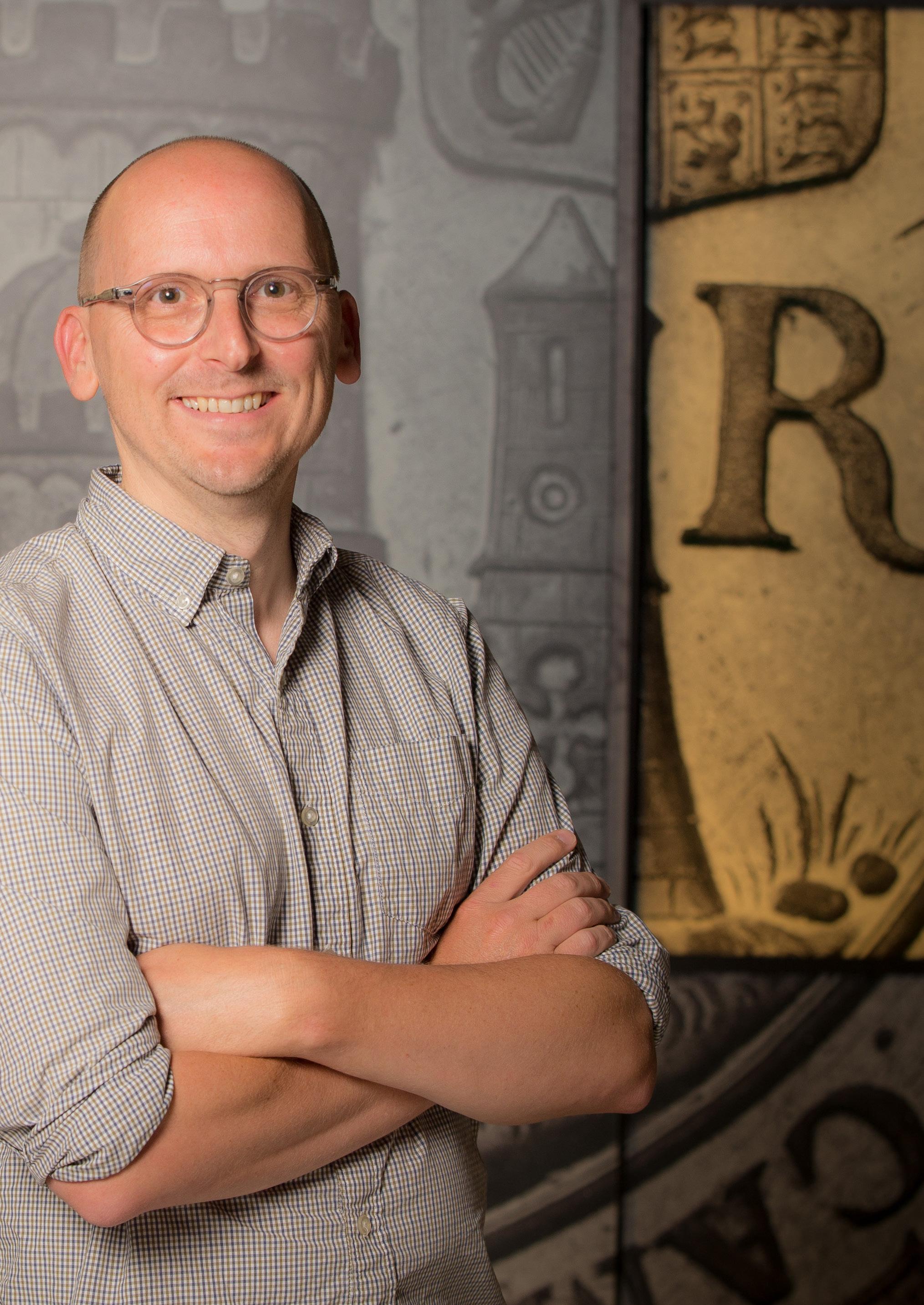

The Royal Mint is a company that needs little introduction, at least not to the majority of the Great British public, coin collectors, or those interested in the Royal Family.
Founded more than 1,100 years ago in around 886 AD, the Mint – as it’s colloquially known – is one of the UK’s oldest brands and remains the official maker of British coins. It’s also billed as the home of precious metals (think gold bullion bars) and recently launched a luxury jewellery collection called 886 by The Royal Mint.

That’s without mentioning the illustrious commemorative coins side of the business, which continues to thrive, and the iconic Olympic medals it created for London 2012. It will come as no surprise, however, that The Royal Mint has had to digitally adapt to rapidly-evolving societal norms and technological advances.
Much of that responsibility has fallen to Richard Hobbs, Group IT Director of The Royal Mint, who joined just before the pandemic in early 2020. Hobbs has been spearheading The Royal Mint’s technology transformation and implementing a five-year strategy that supports the organisation as it diversifies –which, he believes, is on the right track.
“We’re transforming from a traditional manufacturer into a modern, digital-oriented organisation,” says Hobbs. “And over the last five years or so, we’ve been very successful in our commercial diversification but also in introducing new technology into the business.”

Like all forward-thinking manufacturing businesses, The Royal Mint has come to recognise the undeniable importance of sustainability and, with that, is factoring sustainable practices into its everyday operations.
Later this year, The Royal Mint is opening a plant to recover precious metals from electronic waste. Once up and running, the precious metals’ recovery site is expected to process 90 tonnes of UK-sourced e-waste every week.
Clearly, then, The Royal Mint requires a powerful ERP system in the form of

“We’ve been really successful in our diversification, but also in introducing new technology to help the organisation”
RICHARD HOBBS GROUP IT DIRECTOR, THE ROYAL MINT
Gwillimdesign process
Microsoft Dynamics 365 for Finance and Operations to support this groundbreaking journey. The aim, Hobbs explains, was for this technology to support that entire manufacturing process – from the minute the e-waste is sourced, all the way through to products reaching the consumer.

That includes being able to track e-waste loads as they come in, manage the process of removing component parts, identify them, and then move them into The Royal Mint’s business. Building an effective ERP system was therefore “critical”, but also served as a huge opportunity for the tech team.

“There aren’t many opportunities to implement a greenfield ERP in an existing
TITLE: GROUP IT DIRECTOR
COMPANY: THE ROYAL MINT
INDUSTRY: CONSUMER GOODS
LOCATION: CARDIFF
Rich joined The Royal Mint in January 2020, bringing 20 years’ experience from financial services, where he worked for Barclays Bank, Barclaycard, Lloyds Banking Group and Admiral Insurance. During his time, Rich has led his team to implement the technology strategy at The Royal Mint, driving forward its digital transformation, modernising cybersecurity and growing the IT function as The Royal Mint diversifies and expands its business. Working closely with the executive board, Rich has led in driving a culture of technological innovation, enabling the delivery of The Royal Mint’s
Hitachi Solutions is a global Digital, Data and Technology consultancy specialising in end-to-end transformation using Microsoft Cloud Services, Dynamics 365 Business Applications, Power Platform and Azure, including Application Modernisation and Data & Analytics. Our highly skilled teams drive improvements, create efficiencies and enable growth to revolutionise the Public Sector.


Jamie Watson, Client Director at Hitachi Solutions Europe, explains why his firm was well-equipped to assist The Royal Mint in its ambitious transformation

Embarking on its world-first Sustainable Precious Metals (SPM) programme, The Royal Mint (TRM) needed a partner that could seamlessly establish a new ERP system. The Mint joined forces with global consultancy firm Hitachi Solutions, which specialises in people-first business transformation using Microsoft technologies.
Jamie Watson, Client Director at Hitachi Solutions Europe, explains: “From a tech perspective, this involves the full suite of Dynamics 365 (D365) Business Applications: the Power Platform, Azure, and the data and AI platforms. “From a people perspective, it’s centred around change management and digital innovation.”
Detailing Hitachi Solutions’ engagement with TRM, Watson adds: “We worked very closely with The Royal Mint team to deliver a people and business-led engagement that initially focused on understanding their needs and goals. “We prioritised those needs and worked out what enabling technology was required within the Microsoft technology stack to turn those needs
into real-life outcomes. “Since then, we’ve continued our relationship, successfully tendered the SPM ERP transformation programme, and we’ve gone live with the D365 Finance and Supply Chain Management solution.”
The design and build of TRM’s new ERP solution means it will prove to be extremely sustainable in the long term. “As a collective team,” Watson continues, “we had less than six months to design, configure, test and deploy a production-ready ERP solution, which, for anyone familiar with these types of programmes, is almost unheard of.”
Watson said the project had provided “huge opportunity” for transformation across TRM’s organisation. He adds: “We can focus less on keeping the lights on and focus more on continually adding new functionality like the Power Platform, robotic process automation, and even brand-new technologies that are hitting us across AI and machine learning. “That will certainly become relevant to The Royal Mint and could, in itself, provide significant long-term benefits.”
business, so we were very quick to recognise it as an opportunity to test drive some of our assumptions and processes,” says Hobbs.
“It’s been a great learning curve for us to start on our ERP journey and, in fact, we delivered the MVP ERP within 15 weeks of inception. That was done by January and we’re already at the end of phase two, which is implementing a second phase of change.
“It’s been a really successful programme that’s had a big impact on the business.”

The pronounced importance of cloud computing to modern living, technology and the manufacturing industry is well documented. The Royal Mint’s IT transformation from on-premise to the cloud allowed for greater technological flexibility.
“Our new ERP sits on the cloud, giving us the ability to be really quick and nimble, keep it updated, and take on technology,”
“Sustainability is now at the heart of The Royal Mint – and technology plays a crucial role in this journey”
RICHARD HOBBS GROUP IT DIRECTOR, THE ROYAL MINT
says Hobbs. “But it also enables integrations to be fast and effective, allowing us to scale up the product during busy periods and to be elastic without even thinking about it.”
Moreover, cloud computing has allowed The Royal Mint to enhance its data management and cybersecurity, both of which lie at the heart of the aforementioned technology strategy. A data management function has been created to appropriately surface information to the business, which is self-serving and maintains an organised, controlled, and secure data team.
Moving to the cloud and the implementation of modern ERP across the Mint has even helped change internal perceptions of the technology department, with Hobbs adding: “We’re now seen as much more of an enabling function than a
cost function. When the business is moving fast, trying new things, and diversifying quickly, it needs the technology to do it.”
The Royal Mint has been able to count on a whole host of partners to help carry out its recent technological transformation and activities.

Its primary partner within the ERP space has been Hitachi Solutions, which worked closely with The Royal Mint’s tech team to implement the Dynamics 365 system managing the precious metals recovery site.
“We’re essentially a public sector organisation, so we have to go through a procurement process,” explains Hobbs. “When we spoke to Hitachi, from quite early on we recognised there was a really strong cultural fit.
886AD
Founded in 886 AD during the time of Alfred the Great, The Royal Mint is one of the oldest brands in Great Britain
800
The Royal Mint employs more than 800 people across functions including manufacturing and technology

Away from producing currency for the UK and other countries, The Royal Mint has successful businesses across commemorative coins and investments as well as its new luxury jewellery range
“Knowing an ERP project is potentially two or three years long, we wanted to make sure we could work together. The technology itself is quite prescribed but, on the softer side of things, Hitachi were able to engage with us and support us in our decision making.”
Also key was Hitachi Solutions’ experience in working with similar organisations and its success rate in implementing Dynamics 365. This meant that, rather than simply responding to The Royal Mint’s questions, project team members were able to add some colour to the conversations around what they’d seen before.
“We were so lucky,” Hobbs continues. “Hitachi brought in a great project team who we kept for the whole duration; they engaged with The Royal Mint side of things really effectively. It felt like they were part of our own team.

“Hitachi Solutions has been a great partner of ours for about two years now, helping to shape our story and the build we’ve just completed.”
Using Dynamics 365 and sitting within a Microsoft Azure cloud means the Mint has, of course, worked closely with Microsoft, while Optimizely provides its website platform. The emphasis from The Royal Mint’s point of view is on gathering a small but focused group of partners that help the company push through its strategy.
“We recognise that we don’t know the answers to everything,” says Hobbs. “Picking

On a mission to expand on its digital e-commerce operation, with the customer at the forefront, The Royal Mint leveraged Expleo’s domain expertise and best-in-class proprietary methods for testing and assuring technology rollouts.
Find out how Expleo can help your organisation embrace a culture of hyperautomation. LEARN MORE

As the country’s oldest company and holder of the exclusive contract to produce the nation’s coinage, The Royal Mint is an icon of British business. Expleo was offered a rare opportunity to partner with one of the country’s greatest establishments in its digital transformation.
In 2020, Richard Hobbs, Group IT Director of The Royal Mint recognised the significance of innovation within the technology function and formulated a plan to bring new technologies into the business, while accelerating time to market with new product offerings. This coupled with heightened customer expectations around seamless online experiences provided the impetus for the Royal Mint to replace legacy systems and digitalise manual processes that were tying up resources and time. The Royal Mint issued a tender for a project to digitalise its IT infrastructure, selecting Expleo to automate the testing of its e-commerce digital platforms and oversee the testing process for its switch to a new payment provider. Hobbs, architect of the
Royal Mint’s digital agenda, envisioned an ‘automation-first’ approach to IT refurbishment, geared towards expanding the company’s product suite and client base.


Top of the list of deliverables was a highperformance website – RoyalMint.com. Expleo quickly implemented a robust testing framework to identify defects within the existing IT infrastructure and put in place a quality assurance tool that has allowed The Royal Mint to develop new functionality for a smoother customer journey. This intervention dramatically reduced the number of hours required to execute a core regression test pack by 80%.
Expleo’s
Mint’s website helped the company to unlock new revenue streams across its products. Additionally, the improved testing and bug detection capabilities decreased the risk of lost sales due to system downtime, while bolstering the security of The Royal Mint’s website, and mitigating the risk of cyber-attacks.
our partners based on shared synergies and the ability to work well together is the driving factor for me.”
Another important partner for The Royal Mint is Expleo, which has grown to become a force in the fields of engineering, technology and consulting.

“Expleo has supported the expansion of our commercial horizons,” Hobbs says. “Their team’s technical know-how enabled us to improve our development processes and increase efficiencies across the board.
“Expleo facilitated a re-platforming of our website and oversaw the testing process for our switch to a new payments provider. Through this engagement with Expleo, we’ve been able to expedite time-
 Royal Mint Pattern
Royal Mint Pattern
to-market with a new product line, unlock viable new revenue streams and become more commercially agile.
“Overall, this phase of automation has allowed us to focus resources on more strategic initiatives, increase productivity, improve customer satisfaction and boost revenue growth.”

The Royal Mint is focused on working towards a sustainable future for its business and the environment, and this includes developing talent within the technology team.
Hobbs says: “Our technology function is robust and we want to ensure we’re sustaining as well as attracting talent to the business.”
The Group IT Director and his team have forged partnerships with the University of South Wales and the National Cyber Security Academy. They collaborate in a number of ways, including supporting students with projects and dissertations, attending speaking opportunities and sharing insights to provide students with case studies to aid their assessments.
“Hitachi Solutions has been a great partner of ours for about two years now, helping to shape our story and the build we’ve just completed”
RICHARD HOBBS GROUP IT DIRECTOR, THE ROYAL MINT
“It’s important for us as a team to engage with the local communities we operate in,” Hobbs adds. “It also allows us to demonstrate the amazing local career options that we have on offer, helping us to attract talent into the business. We work closely with educational establishments and it’s a mutually beneficial relationship; we offer our knowledge and, eventually, this may make its way back into the business via employment opportunities.”
The tech team also works with the Network 75 scheme on technical apprenticeships, allowing students to gain hands-on experience at a world-renowned organisation. The Royal Mint hires directly from university, with three technology team members being employed via this route.
“It’s important for me to ensure my team is happy, whilst delivering our technology strategy and offering a premium experience for our customers,” Hobbs continues. “Our technology function provides lots of opportunities in which our staff can fully immerse themselves, whether that’s working on our new ERP system on the cloud, data management, cybersecurity or working with our project partners.”

What next for technology at the Mint? The outlook for The Royal Mint is transformational, and its technology strategy plays a huge part in delivering some of these exciting plans.
The precious metals’ recovery site will soon go live and begin putting tonnes of e-waste to good use. Cybersecurity innovation and use of data to enhance customer experience is also on the agenda, as are various improvements to the website. It’s projected that the ERP journey will be complete in around 18 months’ time.

Furthermore, Hobbs predicts that AI and machine learning will become increasingly influential in both the technology and manufacturing spaces.
“It’s really interesting to think about how we can harness new technology like generative AI,” he adds. “What impact will it have in the manufacturing space? What can we teach it about our manufacturing processes to constantly enhance and develop them? The scope of potential innovation is boundless.”
“We work closely with educational establishments, and it’s a mutually beneficial relationship”
RICHARD HOBBS GROUP IT DIRECTOR, THE ROYAL MINT
How secure are the payment technologies we rely on, and what regulatory implications exist around the integrity of modern transactions?
WRITTEN BY: ALEX CLEREAs mobile payments and contactless card payments increase in popularity, the security of transaction technologies is thrust into sharp focus. According to UK Finance, nearly a third of adults are registered to use mobile payments – a figure that rises to more than 60% of Americans, according to separate research from YouGov.
This increased adoption places a burden of obligation and responsibility on payment service providers and processors. So, what should we be looking out for around the security of transaction technologies?
What regulatory implications currently exist?

As you would expect from a heavilyregulated industry like finance and payments, there are certain regulatory minima that payments companies must follow.
“Payments have always been a tradeoff between security, cost, and ease of use,” explains Andrew Neeson, Managing

PayEX offers customizable AR/AP Automation software for B2B businesses looking to optimize their working capital and unearth hidden revenue otherwise written off due to manual processes and slow communication














Editor and Research Director at regulatory intelligence firm VIXIO. “This trinity can often feel like a fine balancing act, with the exertion of one typically being at the expense of the other. For example, it is possible to add so many layers of security that a payment could be made virtually impenetrable to fraudsters. However, in doing so, it could also mean prohibitively high costs and a level of complexity that would frustrate users.
“Contactless is a great example of how this can work in practice. While it makes payments easier for both consumers and merchants, there is a trade off in terms of a cost to security (no PIN authentication),

which is balanced by maximum spend limits to minimise risks. This can be adjusted as risk becomes better understood or for public policy reasons, such as the increase in contactless limits during COVID-19 in many parts of the world. Regulators often deal with this trade off.
“In terms of transactional security, one of the big pieces of regulatory interventions in the EU and UK was the introduction of Secure Customer Authentication. With some notable exemptions, banks require two forms of identification at checkout, in the form of something the user knows, something the user has and something the user is.
“PAYMENTS HAVE ALWAYS BEEN A TRADE-OFF BETWEEN SECURITY, COST, AND EASE OF USE”
ANDREW NEESON MANAGING EDITOR & RESEARCH DIRECTOR, VIXIO
“When introduced, this was controversial – and it still is – resulting in a heated consultation. The big issue for some payment firms and merchants was they feared that the introduction of additional friction (security) would cause shoppers to abandon their baskets and loss of sales would outweigh any fraud prevention benefits. The regulator had a difficult job in trying to balance concerns, ensuring a level playing field as well as adequately protecting users from fraud. Acknowledging this challenge, the European Banking Authority’s chief recently noted that it was their job to make everyone equally unhappy with the rules and guidance that it oversees.”

“FINANCIAL INSTITUTIONS MUST EMPLOY CUTTINGEDGE TECHNOLOGY TO MONITOR TRANSACTIONS AND DETECT SUSPICIOUS ACTIVITIES PROACTIVELY”
ANDREW NOVOSELSKY CPO, SUMSUB
One of the most pressing security concerns emerging out of the pandemic is the prevalence of contactless payments. UK Finance’s figures show that nearly 70% of debit card transactions are now contactless, representing a multi-billion-dollar industry. Their popularity only increased during the pandemic, as wary consumers and businesses owners tried to reduce contact and observe social distancing as best they could.
Andrew Novoselsky, CPO at Sumsub, says: “Contactless payments have seen a significant rise in popularity, and we see new features being actively launched; for

instance, Apple just announced Apple Pay Later, allowing users to split purchases from $50-1,000 in four payments. However, evolving so rapidly, the payments industry is not without its weak spots, and it is crucial to identify and address them to ensure the security and efficiency of the payment system.
“One significant weak spot is bank card fraud in contactless payments. Recent reports suggest that hackers are using stolen credit card data to conduct fraudulent transactions using Apple, Samsung, and Google Pay. This highlights a significant issue in the financial industry, as many businesses rely on mobile payments to accept
transactions. The fraudulent purchases made contactlessly are challenging to detect, which makes it easier for fraudsters to get away with their criminal activities.

“To combat this, it is crucial for financial institutions to invest in robust security measures to prevent such frauds. One of the possible ways to tackle this rising type of payment fraud is transaction monitoring. Financial institutions must employ cuttingedge technology to monitor transactions to detect suspicious activities proactively. AI-powered transaction monitoring solutions are able to identify and prevent fraudulent transactions by immediately freezing accounts and reporting such activities to relevant authorities. Furthermore, it is essential to educate users about the dangers of storing sensitive data on mobile devices and educate them on best practices for safe mobile payment transactions.”
As new technologies come online, it is likely we will need greater regulatory safeguards to protect consumers against abuse or fraud. In 20 years’ time, it is entirely plausible that we will be paying for parking from inside our car, or ordering groceries through smart refrigerators. Who knows, maybe our smart doorbells will even use machine learning to let delivery drivers into our homes to put the delivery into our cupboards? As always, these technical opportunities present regulatory challenges.
VIXIO’s Andrew Neeson says that, although the channel may change, the underlying technology behind it will still be similar to the card payments we make today – though that is not always a good thing.

“The payments infrastructure designed for one channel does not necessarily translate well to others,”

Neeson says, “and fraudsters are adept at switching targets as new opportunities open up. In the same way chip-and-PIN did not protect card users from online payment fraud, a shift in channel can open up new potential weak spots where existing protections (including regulatory requirements) are not adequate.
“Regulators are constantly battling with fast-changing technologies and consumer habits. In reality, regulators tend to be behind the curve on this and only tend to intervene when a particular market starts to mature and potential detriment can be identified.
“Buy-now-pay-later is probably a good example of this: in many countries, it sits outside of existing consumer credit regulations. As the market has matured, several countries have begun to bring it into regulatory scope.”
“THE PAYMENTS INDUSTRY IS NOT WITHOUT ITS WEAK SPOTS, AND IT IS CRUCIAL TO IDENTIFY AND ADDRESS THEM TO ENSURE THE SECURITY AND EFFICIENCY OF THE PAYMENT SYSTEM”
ANDREW NOVOSELSKY CPO, SUMSUB



For more than 60 years, Sunrise Banks has been lending for positive social good. Based in Saint Paul, Minnesota, it claims to be the “world’s most socially responsible bank”. It’s a tall claim – but judging from the contents of its latest social impact report, one that it proudly lives up to.

In 2022, Sunrise's Twin Cities Road Crew toured Saint Paul and neighboring Minneapolis, helping nearly 150 teachers to deliver lessons in financial literacy and empowering 3,300 low-to-middle-income students with the confidence to save, spend and bank wisely.
Last year, Sunrise Banks provided US$1.245bn in loans including nearly $150m to consumers – as well as $1.1bn to businesses and the third sector, including $25m to affordable housing projects, $87m towards economic development, and $186m for the region’s small businesses. It is this local yet high-impact lending that is the driving force behind Sunrise’s mission as a responsible, community-driven lender.
“Sunrise Banks is a social enterprise that just happens to be a bank,” says Tyler Seydel, the company’s Chief Fintech Officer. He believes there is a “double bottom-line” component to everything the bank does. Of course there is the usual margin component, which allows it to remain profitable and sustainable. But more important is the mission component, which champions positive social impact through the products they offer.
Banks is driven by its mission to provide affordable lending to as many people as possible



TITLE: CHIEF FINTECH OFFICER

COMPANY: SUNRISE BANKS
INDUSTRY: BANKING
LOCATION: UNITED STATES
Tyler Seydel is the Chief Fintech Officer at Sunrise Banks.
Tyler has spent 15+ years in the prepaid/national products space. In his tenure, he has worked in compliance, BSA, TPR and risk; managed core as well as national products operations; and led sales, business development, strategy and innovation.
Tyler earned an MBA, as well as his CRCM. Tyler is driven and competitive and spends time volunteering in the community through avenues such as Feed South Dakota. He is a new parent to a bubbly young boy and enjoys cigars in his fleeting free time.
While it’s easy to measure profits (many fintechs will know the feeling of seeing them eroded by the rising cost of doing business), how difficult is it to measure social impact? “You can measure it by way of some of our external manifestations,” Seydel continues. These include being a certified B Corporation as well as a Community Development Financial Institution (CDFI), which means the US treasury recognises Sunrise Banks for providing financial services specifically to low-income, underserved communities and those most in need.
The bank is also a Global Alliance for Banking on Values (GABV) institution – a benchmark that holds it to various standards in the provision of economic, social and environmental development. Community-mindedness and sustainable value are so ingrained to the way Sunrise Banks operates that staff get 40 hours of paid volunteering time every year and, in 2022 alone, the business donated almost $9,000 to various good causes during Charitable Giving Week as a result of employees’ own generosity.
“Sunrise Banks is very forward and active in putting mission with margin,” Seydel says. “That way, we can do sustainable good for our communities and our other stakeholders.”
Although Sunrise Banks is based around the Twin Cities Metro region, Seydel himself is based in Sioux Falls, South Dakota – where the business has a fintech partnership division. A graduate from Colorado Tech, he previously worked for Meta Payment Systems, where he says he faced an inflection point: choose to go down the client relationships and partnerships route, or pursue regulations instead.
He went after regulations – a decision that ultimately led to a career in regulatory compliance, joining Sunrise Banks in August 2012 and, following “opportunity after opportunity”, several senior roles in sales, operations and business development. He was appointed to his current role, Chief Fintech Officer, a year ago.
The fintech division at Sunrise Banks, which Seydel is now charged with heading up, is focused on fintech partnerships and creating opportunities for entrepreneurs who have conceived a way to lift up communities or make consumers’ lives better. “What we do in the fintech division is take those dreams and find a path to saying ‘yes’ – although we’re not the Make-A-Wish Foundation,” Seydel is keen to point out, stressing that there must be value alignment

“HOW CAN WE TAKE A PRODUCT, HAVE THE LOWEST INTEREST RATE WE CAN, AND MAKE IT EASY TO REPAY?”
TYLER SEYDEL CHIEF FINTECH OFFICER, SUNRISE BANKS
between fintechs and the bank’s own social mission and regulatory sustainability.
The bank runs the full gamut of collaboration – from pairing with fintechs who already have a product in the market and simply want another issuing or sponsoring institution, to co-creating from scratch with like-minded innovators who arrive with the seed of an idea in search of expertise to make it come to fruition. Alternatively, a third route might include the bank itself conceiving an idea that would benefit its customers and seeking partnerships that will enable it to facilitate that product launch. “Those are typically the three delivery channels in which the bank does fintech books of business,” Seydel says.
To understand what their customers need, Sunrise Banks needs to first know
who they are. Thankfully, the organisation boasts a diversity of thinking to introduce a list the bank’s 319 employees are majority female (55% versus 45%, to be precise), with almost a quarter (23%) coming from underrepresented social groups. The bank’s staff speak a wide range of different languages – from native American tongues such as Choctaw to world languages like Farsi, Mandarin, Amharic and Tagalog.
The need to identify with the bank’s diverse customer base is clear to see.
Although the region is less deprived than Minnesota as a whole, there are still 270,000 people living below the poverty line – and there is a real mixed picture when it comes to poor and rich. It is a melting pot that neatly encapsulates the spirit of America, with lots of opportunity but also lots of

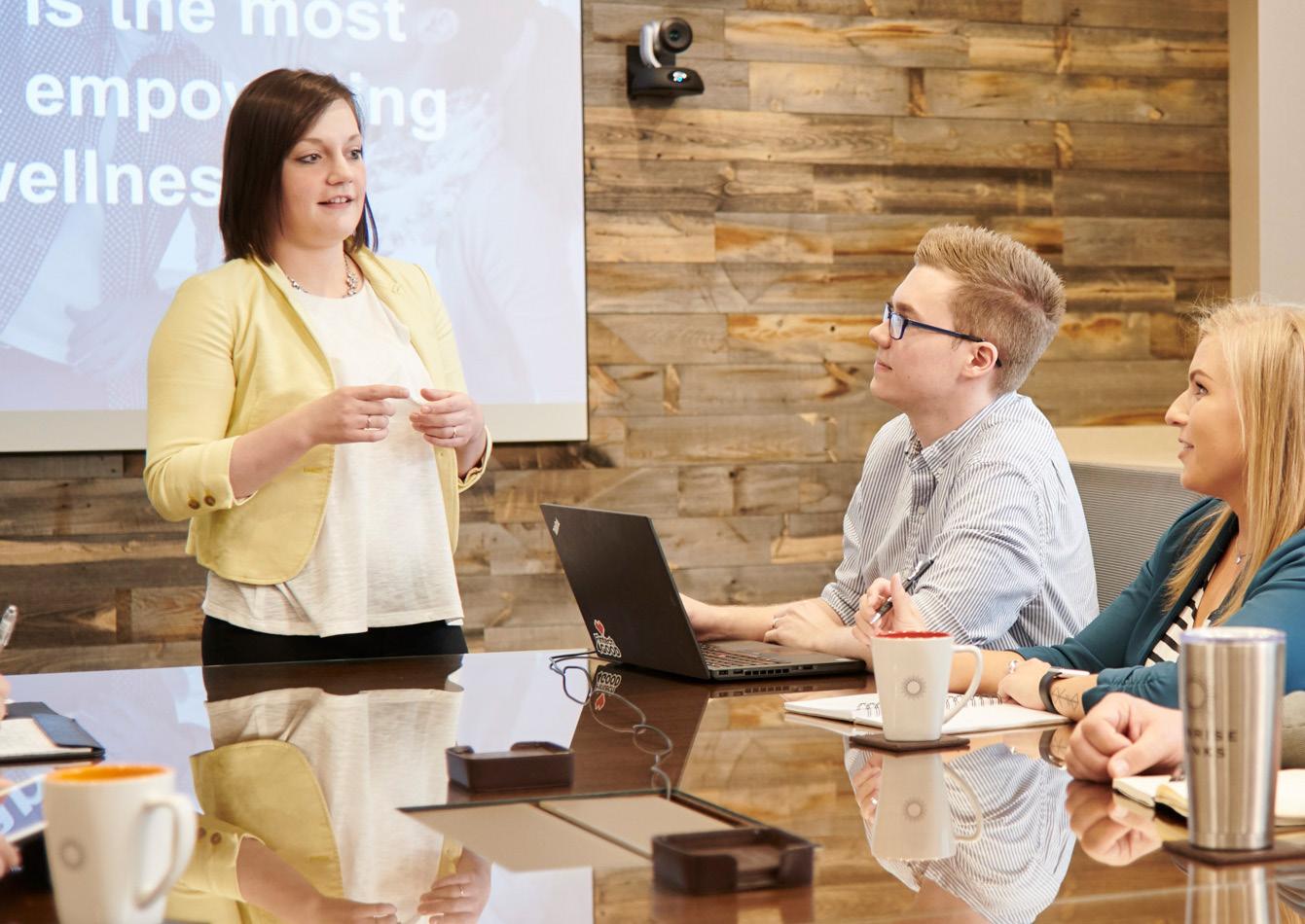

wealth inequality. Sunrise Banks’ four retail locations, spread throughout Minneapolis, are strategically located in low-to-middle income census tracts to help the bank better serve its underrepresented customers. The Twin Cities region has plentiful graduate prospects too, with Sunrise Banks partnering with local universities on a successful internship programme.

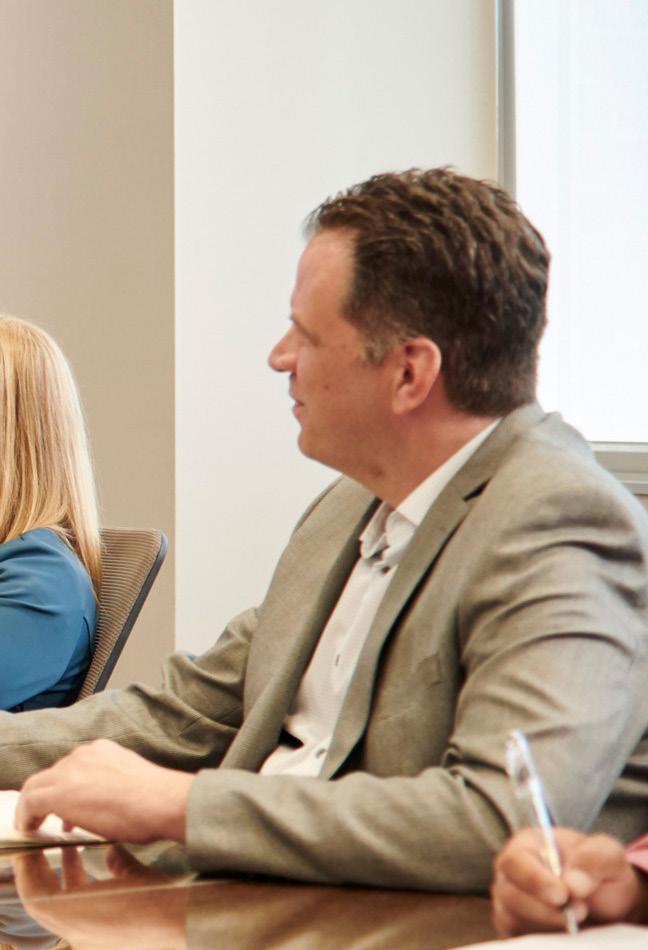
The core tenet of high-impact lending revolves around providing credit to as many customers as possible, Seydel puts it: “How can we take a product, have the lowest interest rate we can, and make it easy for them to repay so they don't even have to think about it? All they need to think about is what they're going to use that money for, and everything else happens on the backend without them needing to do a thing.”
One way the bank does this is by removing the need for credit checks in some products – which rely on an often-outdated snapshot of a customer's circumstances, and can marginalise those customers most in need of credit. If a borrower is in full-time employment and earns enough to be able to repay their loan, why shouldn't they be considered a safe debtor? Traditional credit checks, which have been accused of being outdated in the past, place surprisingly little emphasis on a borrower's earnings and instead focus on debt history and the promptness with which they repaid previous loans. In theory, a customer's financial situation could have worsened and their ability to repay deteriorated – but so long as they have repaid loans in the past, they are likely to be accepted by traditional lenders.
Sunrise Banks turns this antiquated process on its head. The effect is a suite of lending products that boosts financial
inclusion for the bank's customers and drive down the cost of referencing. “With credit checks, there's going to be a document; there's going to be some compliance risk there; there's going to be a need for us to capture consumer information for us to run them through and provide them disclosures,” Seydel explains. “If you can take that component and design a product without doing a credit check, and remove all that complexity, then you'll reduce the cost. That's what we did.”
So doesn't the removal of credit checks add extra risk? In short, yes. Seydel acknowledges that there is inherently more risk, but the bank takes measures to ensure a customer's ability to repay and guard against lending to customers who can't afford it. Credit files don't contain information about earnings anyway, so Sunrise Banks is focusing on a metric that it believes is more central to a customer's ability to repay.
“What you're doing is knowingly accepting a marginal amount more risk,” he continues. “It’s all about driving down the credit product cost, it's about inclusivity, and it's about creating an environment that allows people to participate.”

One of the ways Sunrise may improve its credit decisioning in future is by utilising open banking, which will connect directly to a customer's bank account and provide a clearer picture of their incomings, outgoings, and transactional history. But that still stops short of a full credit check. It stresses that this would be to aid the impact of what it already does; and, as a social enterprise, it has no plan to compromise on its mission in pursuit of greater profit margins.
Seydel says: “When we start to talk about open banking, gaining access to that data will
“WE ARE PROBABLY GOING TO SEE A SITUATION WHERE SOME CUSTOMERS WILL NEED TO CYCLE THROUGH SOME DEBT”
TYLER SEYDEL CHIEF FINTECH OFFICER, SUNRISE BANKS
allow us to look at underserved communities and structure products that appeal to them. When you look at Sharia-compliant loans, for example, you can't have interest rates with those. So how does the bank go about ensuring that margin? For us, that's secondary to how we actually structure that product.”
Another way Sunrise Banks improves financial inclusion for its customers is by allowing all customers – regardless of their race or background – to have access to the financial system. The diverse approach it takes to its workforce is mirrored in the work that it does with its customers, including those who are most often excluded from accessing financial services. This includes migrants.
Some migrants, particularly undocumented migrants, may lack a social security number (SSN), making it difficult for them to bank, save and borrow. But Sunrise Banks has a purpose loftier than one person's immigration status, so they have created innovative ways to ensure they can still offer products and services to that customer. One product replaces the need for a SSN with an individual tax identification number (ITIN), which an undocumented migrant is more likely to possess. It's all about creating products that are tailored to unique demographics or customer groups, the bank says, rather than just being another rejection letter along the way. In turn, doing good creates a competitive benefit for the bank.
“If those customers need to get a mortgage

and they have an ITIN, there's nowhere else in the Twin Cities to go,” Seydel says. “You're coming to Sunrise.”
With much of the current debate about fintechs geared towards profitability, Tyler Seydel believes that many of the integration partners they work with will switch from customer acquisition to customer retention. Instead of trying to recruit new users –and paying handsomely for the privilege – fintechs will instead seek to drive brand loyalty from the regular users they already have in their database. Incentivising them to use your product more, or spend more when they're on your platform, can be an incredibly powerful way of remaining resilient through a recession.
Banks will also have to adapt. When economic prospects worsen, it becomes more likely that governments will step in and provide assistance programmes for the hardest-hit consumers. This was the case in many countries, including the US, during the

COVID-19 pandemic. “What we are doing as an institution is aligning ourselves more with government aid disbursements,” Seydel explains when asked how Sunrise is adapting to the bigger picture.
And as consumers feel the squeeze, their needs are going to change – and that is going to have to be reflected in the products that banks and lenders offer. A combination of recessionary economic forces, inflation, and bleaker job prospects mean that customers will require more small-dollar credit to tie them over between paychecks or welfare checks. It's also likely that, while their month-to-month requirements might remain low, some customers will require a greater frequency of credit – perhaps a few times a year, or at key holidays when funds are tight. Sunrise Banks' fair and low-interest model means it's ideally placed to assist customers in those circumstances without deepening customers' debt position.
“We are probably going to see a situation where some customers will need to cycle through some debt. They're taking out
 TYLER SEYDEL CHIEF FINTECH OFFICER, SUNRISE BANKS
TYLER SEYDEL CHIEF FINTECH OFFICER, SUNRISE BANKS
a product, paying it off, and maybe then taking out the product once again. We need to look at that and think seriously about whether these folks are becoming trapped in a cycle of economic conditions. What can we do to help them out?”
In our conversations with Seydel, it's clear above all else that mission and purpose are the biggest motivations behind the bank's work. It goes without saying that, regardless of what the economy gives us, Sunrise will continue to prioritise its customers –championing financial inclusion, caring about people’s household budgets, and living up to its obligations as a socially minded business.
When he looks ahead, he can't help but reflect on a topic that has already made an appearance so far in our discussion. “Over the next 10 years, I think open banking is going to become a force in the United States,” Seydel predicts. “It's only going to continue to gain momentum. As you look at the state of globalisation, we'll be forced to deal with open banking or at least we're going to be seeing that as an opportunity.
“Then there's embedded finance. To most consumers, the idea of going into a branch is not an end-destination, it's
a chore. When you pair those two together, that's going to be wildly powerful. Today, financial institutions have your information and they're in a position to know what you need before others will. In the future, nonbank platforms like Facebook might decide to vertically integrate and have their own institution. In that case, are they going to lower their prices in an effort to capture market share? Probably. Because there's a volume component there that's very real and true. I think we're going to see a lot of social platforms start to move into the banking space, because they already have that group of active users.”
When we think about the future of banking, it's easy to assume that will be branch-less. For many consumers it will. Technologies like open banking and embedded finance will empower more

consumers to participate in financial services – and they won't need to visit a bricksand-mortar branch to do so. After all, even in modern society, nearly 6m American households are reported to be unbanked.
But contact-free banking doesn't work for all consumer groups, and the challenge for social banks like Sunrise will continue to be retaining a physical presence for customers that need it. That might include elderly customers or those without home broadband, which still number more than 20m – or 8% of the US population – to this day. Keeping a branch open in a time of mass closures is not always financially viable, so alternative branch models – such as hubs or shared spaces – could signal the new era of in-person banking.
“We are looking at a branch of the future and exploring those options right now. We can't give too much detail because we're still in the exploratory phase,” Seydel teases. “But we're absolutely looking at what our lines of engagement look like for the future.” He mentions that this concept might include community spaces to draw in more people, or broader use of virtual tellers. Maybe
you take the example set by embedded finance and situate mini-branches in establishments that customers still frequent regularly – like coffee shops or gyms.
The shared space model, which is being piloted in a number of regions already, raises the prospect that Sunrise Banks and all it stands for might one day be seen right next to some of the largest margindriven lenders and big banks. So would Tyler Seydel be comfortable about the bank featuring side-by-side with one of the big boys?
“I would love if we had a shared banking space,” he effuses. “I would love it if people had the opportunity to understand the mission component of what we do, because getting that message out there can be tough. If anything, it would be a unique market study just to see how much our brand resonates. I guarantee, as soon as people start to understand our mission, they will pick us every time over one of the big banks.”
“I GUARANTEE, AS SOON AS PEOPLE START TO UNDERSTAND OUR MISSION, THEY WILL PICK US EVERY TIME OVER ONE OF THE BIG BANKS”
TYLER SEYDEL CHIEF FINTECH OFFICER, SUNRISE BANKS
In the aftermath of FTX’s collapse, the crypto industry faces greater scrutiny about the sustainability of crypto mining and the concentration of power
WRITTEN BY: ALEX CLEREThe crypto industry is in overdrive. Despite fluctuating markets, recent negative headlines and the seemingly endless volatility, consumers are still investing and the crypto space is still on the relative up-and-up.
According to Insider Intelligence, the number of US adults who own at least one cryptocurrency was estimated to be almost 34mn by the end of last year – accounting for close to 13% of the adult population, having passed the 10% mark for the first time the year before. The largest ownership group was adults aged 25-34. Men are much more likely to own a cryptocurrency asset than women and, unsurprisingly, the typical
demographic is affluent men. Yet, despite increasing uptake, there remains concerns about the way that cryptocurrencies are mined.
One of the eminent concerns about the growth of cryptocurrencies is the energy consumption required to mine them, particularly for cryptocurrencies that use the proof-of-work model. Indeed, such is the energy intensity of crypto mining, when Ethereum announced at the end of last year that it had successfully transitioned to a proof-of-stake system (requiring crypto
Harness the power of data and leading-edge technology to turn existing know your customer (KYC) and anti-money laundering (AML) compliance challenges into opportunities

staking, rather than crypto mining), it predicted an enormous 99% reduction in carbon emissions.
Indeed, current crypto mining operations use more energy to complete than some medium-sized countries – 91 terawatt hours of electricity every year to be precise, or more than the whole of Finland, which has 5.5mn residents.
Kaj Burchardi, Platinion Managing Director at BCG, says: “While crypto has certainly disrupted traditional finance, its impact on the environment cannot be ignored. The mining of crypto, which requires enormous amounts of energy, has a significant carbon footprint that contributes to climate change.”
But it's not just mining that contributes to conventional crypto's sizeable carbon footprint, Burchardi adds: “Other sources of
emissions in the crypto value chain include transaction processing, data centres and infrastructure. These emissions are not only detrimental to the environment but also pose a risk to the long-term viability of the crypto industry.”
Burchardi says that steps are being taken to rehabilitate crypto and make it a more sustainable option. “More and more blockchain protocols are using a consensus mechanism with a lower carbon footprint, such as proof-of-stake or proof-of-authority. More miners are using renewable energy sources such as solar and wind power to power mining and processing operations.”
One of the overarching benefits of digital currencies on the blockchain, as opposed to Fiat, is that it no longer requires a single, central source of truth (as authority is shared
“AS CRYPTOCURRENCY GROWS AND BLOCKCHAINS BECOME MORE SOPHISTICATED, THE COMPUTING POWER REQUIRED TO BE ABLE TO SUCCESSFULLY MINE WILL BECOME MORE ADVANCED AND EXPENSIVE”
across the network). In this way, it has the power to democratise financial services. And yet, concerns about the way crypto is mined – specifically for whom crypto mining is a viable and accessible endeavour – risk undermining that core mission of democratisation entirely.
“Many mining operations are carried out by individuals using sophisticated computing software that is geared towards completing mining tasks as quickly as possible,” explains Daniel Seely, a crypto expert and financial regulatory lawyer at law firm Freeths.
“As cryptocurrency grows and blockchains become more sophisticated, the computing power required to be able to successfully mine will become more advanced and, ultimately, expensive. This is the case not just for acquiring the relevant technology, but also the significant energy bills which such computing operations generate. This means that, in time, we may see mining operations carried out by large corporate entities and those with the 'deepest pockets'.
“This does, however, give cause for concern. The ethos behind cryptocurrencies
and mining was to ensure the safety and reliability of the network, since mining and transaction verifications could be carried out anywhere on the globe.
“However, by being placed into the hands of fewer and fewer operators, the room for potential misuse of the technology grows, meaning that regulators may begin to turn their attention to monitoring and, ultimately, regulating mining operations so as to ensure there is sufficient oversight and auditing in place to prevent any market abuse.”
“CRYPTO HAS CERTAINLY DISRUPTED TRADITIONAL FINANCE BUT ITS IMPACT ON THE ENVIRONMENT CANNOT BE IGNORED
KAJ BURCHARDI PLATINION MANAGING DIRECTOR, BCG
Events of the last 12 months, including the headline-grabbing collapse of crypto exchange FTX and subsequent police investigations, will have done nothing to sanitise crypto's image or prevent regulators from circling. Increased scrutiny, including tighter regulation, should now be considered near-inevitable to crypto operators planning for the future.
As the crypto industry matures, what were once considered 'cottage industries' will rapidly become industrial-scale operations and crypto mining businesses will have to adapt to the changing landscape. This could mean changing the way they're structured.
As Freeths' Daniel Seely explains, crypto businesses will need to consider the tax implications of their operation. For example, a 'payment' in cryptocurrency as a reward for mining “could give rise to tax liabilities, since cryptocurrencies are increasingly seen as acceptable and taxable assets”. In addition, if an individual wants to sell that cryptocurrency at a later date, other taxes such as capital gains tax might become applicable.
“Whilst many crypto businesses may want to expand, this may mean that they wish to register as limited companies so as to provide the directors with legal protection by being able to avoid personal liability, as well as potentially making their businesses more attractive to investors.
“Firms will, however, need to consider the various legal requirements which will arise from this – if a business grows, will it look to take on employees? If so, it will need to consider the implications and expenses that will follow, such as the costs of preparing employment contracts, obtaining employers’ liability insurance, as well as pension contributions and tax liabilities.”
“IN TIME, WE MAY SEE MINING OPERATIONS CARRIED OUT BY LARGE CORPORATE ENTITIES AND THOSE WITH THE 'DEEPEST POCKETS'”
DANIEL SEELY FINANCIAL REGULATORY LAWYER, FREETHS


WRITTEN BY: MARCUS LAW

PRODUCED BY: LEWIS VAUGHAN


Few startups can say they have a background like Eviden. A new company carved out of French multinational information technology service and consulting company Atos, Eviden’s mission is to help its clients accelerate their digital future.
As Daniel Sinni, Global Head of Innovation and Digital Transformation at Eviden’s Financial Services & Insurance business, explains, the purpose of Eviden is to be the leader in data-driven, trusted, and sustainable digital transformation.
Speaking with Sinni just two weeks after the official launch of Eviden, his enthusiasm is clear. “We just learned the name Eviden,” he says. “Eviden evokes this response of creating new paths forward, transforming possibility into reality, and that’s really what the company is going to drive. We are all super excited to go!”
“It’s rare that you can say you’re part of a €5bn startup, but that’s what Eviden is,” Sinni adds. “We have nearly 60,000 people and 2,100 patents. It is purpose-built to take our clients into the next world of digital transformation, which includes digital integration. Our clients are really struggling with their amalgamation of heritage systems and processes, as well as integrating with the highly disruptive technologies, ecosystems and operation models that drive value. That’s where a lot of the problems need to be solved, and I’m really proud to be part of that solution.”

As Sinni describes, his team helps financial services and insurance customers realise the benefits of digital transformation. Central to this journey is the creation of a new

operating model. “You can’t do that without a team of really passionate experts in those different domains,” Sinni explains. “And then you need a company that is laser focused on that outcome, which Eviden is, as well as having the capability and knowledge of those heritage systems. This is essential to success, tying it all together”
When you take a company the size of Eviden and combine it with the resources of Atos, it’d be difficult to dream up many other companies, globally, that have as much expertise at scale when it comes to enabling digital transformations.
“Many of the companies that we deal with – specifically in the case of financial services
“It’s rare that you can say you’re part of a €5bn startup, but that’s what Eviden is”
DANIEL SINNI GLOBAL HEAD OF INNOVATION AND DIGITAL TRANSFORMATION, EVIDEN
and insurance – they’ve been around for 100 years, and have heritage systems and regulatory constraints that are really heavy,” Sinni explains. “If they were born today, they would be a FinTech company and they would be fast and agile, but they’re not; they’re a monolithic enterprise aspiring (but often failing) for digital change.
“There are not many companies in the world that can help bridge the two,” Sinni adds. “We understand the heritage systems, and now we’re bringing them into the new world of these operating models and these disruptive technologies. That’s what makes my group really unique and special – because we have that DNA and we have been there done that….”
TITLE: GLOBAL HEAD OF INNOVATION AND DIGITAL TRANSFORMATION
COMPANY: EVIDEN
INDUSTRY: IT SERVICES
LOCATION: NEW YORK, US
Daniel Sinni has spent his career advising Fortune 500 clients in digital transformation - specifically disruptive open-source software, AI and cyber risk management.

After graduating from the University of Delaware and joining the emerging telecoms space with Network Plus, Sinni worked for Deloitte before co-founding N-Tier Discoverya premier legal process outsourcing and AI consulting firm where he would serve as COO.
With the business acquired by RVM Enterprises in 2012, Sinni would rejoin Deloitte, before serving in various leadership roles for SunGard Availability Services and Dell EMC Global Consulting Services, before joining Pivotal Software.
Now at Eviden, he is globally responsible for its Financial Services & Insurance Consulting’s Digital Transformation and Innovation Market Leaders, Blockchain/ Digital Assets practice, Federated Fraud/Financial Crime, AI, crosspractice solutions, and strategic acquisitions.

foundation of a successful brand
FALKOR SI is the trusted blockchain platform that’s easy to use

With FALKOR SI, and ByzGen’s expert support, innovators at Atos deploy blockchain solutions that make digital and data integrations reliable and secure.
ByzGen. We make blockchain your business.
Learn more

Be innovative. Reveal new revenue streams. Help your clients build a trustworthy business.
When it comes to data, blockchain is a secure and auditable integration solution. It’s inherently trustworthy. Which is why in regulated sectors, consultants like Atos use FALKOR SI when companies need to share data quickly, securely, and without compromise.
FALKOR SI is ByzGen’s enterprise blockchain platform. Blockchain improves data quality and integrity by maintaining an immutable record of data and transactions – everyone involved can access accurate records. Blockchain platforms like FALKOR SI help people exchange data, make better decisions, and comply with regulations. This makes FALKOR SI ideal for finance, legal, manufacturing and supply chain – sectors that depend on security, trust and traceability.

Atos use FALKOR SI to build secure and scalable digital integrations, fast. With this proven blockchain solution in their hands, consulting leaders at Atos and its new carve-out company Eviden, are winning new work and increasing the value of existing contracts.
ByzGen’s FALKOR platform is built for system integrators like Atos and Eviden. Our partnership with ByzGen is a perfect example of why it is important to work with a proven partner who understands how they can help you as a progressive digital transformation partner.
Daniel Sinni, Global Head of Innovation and Digital Transformation, Eviden.
Unlock new revenue streams with FALKOR SI
FALKOR SI, coupled with ByzGen’s consulting services, makes solving complex data challenges simple. Projects that might have taken years to deliver value now do that in weeks.
Using FALKOR SI our partners have:
y Reduced operating costs by 80% for a regulatory reporting service
y Helped a manufacturer reduce power usage by 20%
y Won projects worth £50m
FALKOR SI makes deploying your blockchain solution quick and easy. Backed by ByzGen’s expertise, it’s a tool you can trust.

Central to the aim of Eviden is to help organisations on their journey from digital transformation to one of digital integration at scale.
“The pandemic made it really clear that the world has fully embraced digital,” he explains. “We’ve learned that technology is a massive enabler if used the right way, and if you integrate it into your operating model, into the way that you do business and connect with your customers - that’s extremely powerful.”
With startups using platforms such as blockchain as well as new generative AI capabilities, the question of how best to integrate them into legacy operating models and heavily invested systems is

“Eviden evokes this response of creating new paths forward, transforming possibility into reality, and that’s really what the company is going to drive”
The €5bn startup helping clients embrace digital integration
WATCH NOW
DANIEL SINNI
GLOBAL HEAD OF INNOVATION AND DIGITAL TRANSFORMATION, EVIDEN
an ongoing challenge. This is often new territory for most companies and they struggle holistically to get their arms around how best to tackle this disruptive change. Not to mention the evolving global regulatory and compliance landscape.
“You’d be surprised how many mission critical things still run on a mainframe,” Sinni comments. “Yes, these systems are known to be reliable but also a major barrier to new opportunities and often very expensive. Not to mention those folks are retiring, and those skill sets are going away fast. The question today is how we fix that in a way that doesn’t break the bank and increase risk, yet drives the agility and the new opportunities all companies want to accelerate. You need to have domain expertise on both sides of the coin here to win.
“That is digital integration, and that’s where we are right now. That’s what’s painful, that’s what’s hard. That’s what can be expensive and high risk. And to achieve that, you need an experienced partner. At Eviden, we can be your trusted partner in this journey end-to-end.”
However, as Sinni warns, there is no “silver bullet solution” when it comes to digital integration.
“ To lift and shift something into the cloud is arguably straightforward,” he says, “but making that work with low toil, making it compliant, and making it tie into the heritage systems with low friction is very, very hard.”

When it comes to migrating from legacy platforms, digital transformation or
57,000 People
2,100 Patents 50,000 Digital Certifications
€5bn Revenue

strategic innovation, Sinni describes the five ‘S’s: speed to market, stability, security, scalability, and savings. As he explains, technology for the sake of technology should be avoided.
“The first S is speed to market. Can you get to the market faster than your competitors? Can you use technology as a competitive weapon?
“The second,” he adds, “is stability. There are a lot of challenges in technology around the stability of systems. They’re often ducttaped together... When things are unstable, customers can’t get into systems, things don’t work well. You must have consistent and reliable platform stability at scale.
The third is advanced security postures. “Security has to be the cornerstone,” Sinni explains. “Companies don’t tend to exist when they’re breached and trust is compromised.

“The question today is how we fix that in a way that doesn’t break the bank and create risk, yet drives the agility and the new directions that we want to go”
DANIEL SINNI GLOBAL HEAD OF INNOVATION AND DIGITAL TRANSFORMATION, EVIDEN
“The fourth thing is scalability. Can you meet your customer’s demand at scale? You need cloud-like scalability, you need elastic services around that. You need resilient automation of those things to be able to scale, to meet the demands so that you can continue to service your customer’s needs.
“And, then, last is really savings,” he explains. “Ultimately, there’s always an investment or sometimes they pay for themselves. If you do rapid smaller projects, you get success and you build on top of that - it becomes infectious in an organisation. Business funding becomes more accessible. That’s ideally the approach - to have things pay for themselves by earning the right to the next phase and continuality winning as a team.
Key to all of this is using technology based on business outcomes. “If you don’t have those five S’s, then you probably shouldn’t move forward with certain initiatives,” Sinni asserts. “There are pieces of technology everywhere, but it doesn’t make sense unless it accelerates your business. Tech tinkering without the support and collaboration of the business is often a fool’s errand.”

Working with companies like Google, Microsoft, VMware, Eviden benefits from its relationships with a number of large and small partners. One such partnership, with ByzGen, is particularly special.
– streamlines data exchange by empowering decision-makers with a safe and secure process to share sensitive information.
Blockchain is often aligned with only cryptocurrency, which has seen its share of hype and fraud these past years. But as Sinni explains, thinking of blockchain
as an infrastructure and a decentralised ecosystem can be very powerful and can solve important enterprise challenges.
“ByzGen’s FALKOR platform is built for system integrators like Atos/Eviden,” Sinni explains. “Our partnership with ByzGen is a perfect example of why it is important to work with a proven partner who understands how they can help you as a progressive digital transformation partner.
“We’ll give them use cases, they give us use cases, and we iterate on that together. We have trust together built through successful projects with our clients. We’ll go to market with them, they’ll go to market with us, and we co-innovate together to be able to drive these outcomes with our clients. ByzGen is also part of our Eviden and Atos innovation programmes that we call Scaler and Horizons.
“It’s a very special relationship; it’s one that’s been very successful, and we’re going to continue to build on that with Eviden.”
With the accelerated capabilities of AI taking off in recent years, this topic will continue to dominate as organisations learn more about how they can harness its potential.

“There are some amazing use cases that are coming out – banks, firms and institutions are already modifying their operating models to utilise AI,” Sinni comments. “Those use cases are going
to expand as the models become more intelligent and integration will be critical to success. I also think that there’s going to be some consolidation in fintechs, which could be an opportunity for Eviden.”
Sinni also predicts that usage of Web3 technologies like blockchain and IoT technology will continue to increase.
“Juvenile crypto projects and fraud will decrease and successful projects with true utility will be further advanced given strong developer and user communities,” he says. “Financial services companies are already using blockchain as digital asset infrastructure. But blockchain can also be used as customer loyalty solutions to create new opportunities, democratise data, and enhance brand loyalty. The convergence
“ByzGen’s FALKOR platform is built for system integrators like Atos”

of these new technologies, use cases and challenges is exciting to be a part of.”

Fundamentally, when it comes to regulation, taking a balanced approach is key so as to not impede innovation but provide proper guard rails. “AI will be one of the most disruptive technologies in many industries and as a society we need to ensure its nefarious capabilities are mitigated,” Sinni asserts. “If we can do that, we will unlock these new possibilities that will be driving the next amazing discoveries and opportunities.
“Those things excite me, and that’s going to be happening at a rapid pace. The digital content and breakthroughs will be built from a lot of these newer technologies. It will be one hell of a ride!”
As Sinni explains, the near future will be one of promoting and proselytising Eviden as the business launches.
“We’re going to be showcasing all of these really cool digital projects, evangelising them and innovating with customers to help them accelerate their digital ambitions,” he says. “I’m really happy to be part of that because, in the past six or seven months, we have worked hard to assemble the right teams and go-tomarket - we’re more than ready to go.
“I have an amazing global team; we’re all very passionate in our domains, to work with our customers and build some amazing outcomes, but just as important, to get involved in some really great partnerships. I’m super pumped to help build Eviden!
“It’s going to be super busy,” he concludes. “It’s going to be a lot of fun. It’s going to be a little chaotic, but I think we’re all going to benefit – especially our clients.”
Consumers face greater cost pressures than ever, so how can purpose-driven lenders like CDFIs ensure they make an impact while remaining profitable?
WRITTEN BY: ALEX CLEREAs the cost-of-living crisis deepens and inflationary pressures affect household budgets, lenders are seeing the market change considerably in front of their eyes. The most vulnerable consumers in society are at greater risk from the rising cost of living, and, if refused credit by mainstream lenders, they could turn to high-cost, predatory alternatives.
“The cost-of-living crisis is pushing millions of people whose circumstances mean they can’t borrow from mainstream lenders towards loan sharks and very high-interest lenders,” says Theodora Hadjimichael, CEO of industry body Responsible Finance, which represents community development finance institutions (CDFIs) in the UK.
“Affordable, fair credit has never been more needed, and Responsible Finance providers improve their customers’ financial resilience – not just with credit, but by helping them strengthen their finances even
if they cannot offer them a loan. Credit is not the answer to the cost-of-living crisis or to low pay, which are issues for politicians and employers to address, but credit is a fundamental part of how we live our lives.”
“Demand for us has never been as large,” explains Tim Rooney, CEO of responsible lender Salad Money. “The people that we're serving are in the lower four or five deciles of income. They are people who, typically, would have used high-cost credit to deal with the bumps in the road that they have. Many would automatically be rejected by lenders that use credit scoring, but our applicants have adopted the use of open banking."
In a world where companies are constantly trying to get one up over their competitors, the question of what it means to be a 'responsible lender' in these times is a very pertinent one. A low-interest loan can save

Experience composable banking with Mambu's SaaS cloud banking platform.
Learn more
consumers money – an average of more than £300 with CDFIs compared to the alternatives available to them, Hadjimichael asserts.
To be part of the organisation she represents, lenders must meet certain criteria: "Lenders must have a social purpose and asset lock written into their governing documents; must be not-for-profit organisations (in other words, distributing profit is not their primary objective) or social enterprises; must be able to demonstrate a positive contribution to community, economic and social development and the environment within communities or markets that are not adequately served by mainstream financial service providers; be able to demonstrate accountability and transparency to stakeholders, target communities and customers; and comply with the Responsible Finance Code of Practice."
It's not just about loans though; responsible lenders can help customers out in other ways – and this can be the point of difference that sets them apart from faceless and unscrupulous mass lenders.

Responsible Finance members Salad Money, Scotcash, and Moneyline have all pioneered an automatic benefits calculator that tells applicants if they have unclaimed benefits. This allows those eligible for government support to unlock extra cash, even if their application isn't successful.
“Nearly 7 out of 10 applicants aren't claiming things like Universal Credit [a government welfare programme in the UK] and other benefits they're entitled to,” Hadjimichael says. “CDFIs have helped tens of thousands of people identify an average of
more than £410 per month each in benefits they were due.”
Salad Money – which specialises in affordable credit for healthcare workers and public sector employees with impaired, poor, or thin credit files – addresses financial exclusion by tapping into open banking. It also replaces traditional credit scores, the bane of many-a-loan-applicant, with its own proprietary credit decisioning software for affordability assessments.
“Open Banking data enables our social enterprise to categorise and analyse an average of 1,600 individual transactions spanning the previous 12 months for every applicant,” Rooney says. “We use this, and AI, not only to make an approval decision but
to generate unique insights into applicants’ financial health, because we want to use the power of this data to drive change."
Despite the best intentions, there is still a harsh reality to confront. Lenders like Salad Money can't accept all applicants, as that would be irresponsible. But they can have a tangible impact on the availability of credit to some underserved populations. This comes at a cost; Salad Money's interest rate is 79.5% APR, which Rooney readily accepts sounds “horrific” to most consumers. That, however, is simply the cost of doing business.
“The reason why we have to lend at that rate is because of the losses that we see, the cost of funds that we have, and then the scaling of the business. Our lifetime loss

rates are well below market average due to the application of AI and our ability to analyse thousands of data points from the consumer. But it is the cost of funds that really affects us."
With the most vulnerable consumers struggling to afford week-to-week essentials, buy-now-pay-later (BNPL) has proven incredibly popular. Consumers can offset the cost of purchases over several monthly instalments, often at no extra cost. But Responsible Finance has noticed “an explosion” of consumers with 'stacked-up' BNPL loans, Hadjimichael continues.

“Community lenders only lend if people can afford the repayments and it’s concerning to see some BNPL providers accepting applicants we don’t think can afford to repay loans,” she says.
"Our members' customers are typically those on low or changing incomes or in vulnerable circumstances who cannot access mainstream credit, so we are concerned about the impact, transparency and affordability of BNPL. It can soon add up to unsustainable amounts and over-indebtedness and can cause defaults on these and other payments, impairing people’s credit ratings and pushing them into financial exclusion.”
“OPEN
ENABLES
AND ANALYSE ON AVERAGE 1,600 INDIVIDUAL TRANSACTIONS SPANNING THE PREVIOUS 12 MONTHS FOR EVERY APPLICANT”
TIM ROONEY CEO, SALAD MONEY

One issue that runs parallel with affordable lending is that of buy-now-pay-later (BNPL). Admittedly a type of credit in itself, it is often underestimated by consumers who increasingly think nothing of spreading the cost of purchases over the next few months. As BNPL providers strive to innovate with their repayment terms, consumers risk being caught out by an accumulation of BNPL debt further down the line.
Todd Latham, CEO of technology platform Divido, argues that the sector can still do more to protect customers: “We are pleased to see that affordability checks are now becoming standard practice for many BNPL providers. These consider the customer's income and any outstanding loan commitments, discovered via a stringent credit check. This is a great first step towards protecting the customer from taking out a loan they can't afford, or too many loans at the same time.
“Retailers can go even further by working with tierone lenders, who offer this calibre of affordability checking as standard. It may sound counterintuitive, since the lender's acceptance rates may be lower – but it will ultimately be better for the consumers and will help to produce fewer missed repayments, meaning fewer penalty fees.”
He also notes that we're seeing an evolution in the BNPL market, driven by continued pressure on consumers' wallets. Recently, Klarna launched an app-based shopping platform that combines all their merchants in one place – a kind of price comparison website just for products that you can pay off monthly. It's a tempting proposition for customers, and Latham expects to see more of these marketplaces, but he warns that it's not a flawless strategy.
“It puts merchants in a race to the bottom by forcing them to undercut their competitors and encourages shoppers to pay through BNPL even when a cash or card payment may be easier, not to mention cheaper for the merchant.”
She says that regulation for BNPL is “long overdue” and would improve both transparency and affordability, stopping people from getting into unsustainable levels of debt.
Todd Latham, CEO of technology platform Divido, believes there are steps that consumers can take to protect themselves against the perils of BNPL: “It's important to remember that checkout finance is designed for large baskets and big-ticket transactions. It may seem tempting to use interest-free credit for small purchases, but these small loans can quickly add up and become unmanageable. If you are committed to a purchase and have the cash to pay for it there and then, it's usually better to choose this option.
“This is especially true in situations where the lifespan of the loan could outlast the lifespan of the product, as in the case of using BNPL to pay for food and grocery shopping. In this way, you can stop yourself from ending up in a situation where you are managing multiple loans with different repayment terms, which can become confusing and increase the likelihood of missed repayments.”

“SOME OF OUR MEMBERS HAVE DESCRIBED AN EXPLOSION IN APPLICANTS WITH STACKED-UP BUY-NOW-PAY-

 WRITTEN BY: ALEX CLERE
WRITTEN BY: ALEX CLERE
 PRODUCED BY: JACK MITCHELL
PRODUCED BY: JACK MITCHELL
Chris Moore, Head of the Apollo ibott 1971 syndicate, is possibly an anomaly within the world of insurance. Few kids dream of growing up into a life of underwriting, but Moore says he knew he wanted to get into insurance since going off to university.
“I studied mathematics at Bath University,” he tells us. “A lot of people talk about falling into insurance or just somehow ending up in insurance; I may be one of those that actually wanted to be in insurance. That's something I'm quite proud of.”
After graduating from university, Moore pursued a career as a broker in London, spending two years at Catlin before joining Apollo a decade ago. It’s no surprise that he has stayed: the company sits at the vanguard of new technologies, creating insurance solutions for emerging businesses that will be household names in a few years’ time.

“I love insurance,” Moore effuses. “We should be advertising the amazing things about the insurance industry and trying to recruit the freshest talent from university.”
One of Apollo ibott 1971’s biggest areas of focus is autonomous vehicles (AVs). Certainly, it has the potential to increase convenience for consumers and unlock new opportunities for mobility in our daily lives. But AV technology also has the potential to reshape the insurance industry, and insurers must hop on board early to ensure they’re fully prepared.
With autonomous vehicles set to disrupt the future of mobility, Apollo ibott 1971’s Chris Moore talks about the implications for the insurance industry

Moore believes that mistrust in autonomous vehicles is often misplaced, especially given most people are happy to fly in a plane or travel on a ferry while it’s in autopilot mode. “We trust autonomy in so many areas of our lives, including aviation and marine, but as soon as you start talking about autonomous vehicles people recoil,” he says.
In part, this is informed by distant memories of sci-fi catastrophe movies. It’s also a result of headline reporting, where a single AV crash will make front-page news but a million safe AV rides will not. “I would

absolutely get into an autonomous vehicle,” Moore says. “I might even feel a lot safer in it.”
According to McKinsey, autonomous driving could create revenues of US$300-400bn by 2035. Most new cars already feature some sort of autonomous technology, allowing drivers to maintain a constant speed or helping to switch between lanes, usually on highway or motorway networks. In future, this technology will enable

complete automation of vehicles – starting with industrial applications like agricultural vehicles and culminating in a full robotaxi experience that could make inter-city travel more comfortable and affordable – something that Chris Moore believes is the toughest mountain to climb for AV technology, not least because autonomous systems still struggle to predict irrational human behaviour, particularly in a lowspeed, urban setting.
“I think the size of the opportunity is huge, both in the AV industry itself but also in terms of the insurance opportunity that's
TITLE: HEAD OF APOLLO IBOTT 1971
INDUSTRY: INSURANCE

LOCATION: UNITED KINGDOM
Chris has been with Apollo since 2013 and was instrumental in the setup of ibott. With over a decade of experience with casualty and innovation, which he has a passion for, Chris believes in insurance products being an enabler for new progressive business models such as the sharing economy. He is FCII and CRIS qualified, as well as sitting on the Lloyd’s innovation panel and the Lloyd’s Market Association Committee for both US and International Casualty.

linked to that. When you think about the amount of disruption that autonomy can cause to almost all industries, it's really staggering.”
Broader adoption of AV technology will really depend on regulatory approval. There are already autonomous rideshare pilots happening in multiple US states, chief amongst which are probably California, Arizona, Florida and Nevada. The usual first-movers will predictably emerge, keen to attract inward investment, but while regulators remain to be convinced about issues such as safety and scalability, there are things that insurers can do today – such as prepare their businesses to analyse and price AV risk – that will set them up for an autonomous future.


Edge Case Insurance is proud to be exploring a partnership with Apollo ibott to provide risk-informed underwriting and insurance that supports safer AVs for everyone.
Learn more

Failing to do so could have dire business consequences. Insurers risk angering and alienating OEMs if they fail to recognise the potential around AV, provoking them into offering their own in-house insurance products in much the same way that Elon Musk has done at Tesla. After all, autonomous driving will only be a $300400m opportunity if insurers position themselves to take advantage of it.

AV technology will make our roads safer Summarising the nature of the opportunity that exists around autonomous vehicles, Moore believes it will take the worst elements of human behaviour – the fact that we are prone to error, are not very good at concentrating over long distances, and tend to panic in high-pressure situations such as near-crashes or losses of control – and replace it with the best attributes of automation. This will mean that, potentially, autonomous vehicles become safer than human-driven cars.
How much safer? In the US, data from the National Highway Traffic Safety Administration (NHTSA) showed that human drivers are involved in a fatal collision 1.33 times every 100m miles travelled – that’s a 0.00000133% probability of fatality, or
CHRIS MOORE HEAD OF APOLLO IBOTT 1971
“A lot of people talk about falling into insurance or just somehow ending up in insurance; I may be one of the few that actually wanted to be in insurance”
conversely, a 99.99999867% safety rate. Autonomous vehicles will have to be better than that to be accepted as a ‘safer’ technology – but thanks to advances in artificial intelligence and machine learning, that’s plausible.

“It’s clear that autonomous vehicles lead to a huge reduction in the frequency of loss and the frequency of accidents, which is something we can all be supportive of,” Moore says. “You will also see a reduction in the severity of injury. Autonomous vehicles will react quicker; they have quicker braking times and quicker response times so, if an accident cannot be avoided, you'd like to think that collision would be at a lower speed.”
Despite the road safety improvements, that won’t necessarily mean that insurers are better protected against claims. In fact, the severity of insurance loss could be a lot higher. This is because – in the same way that only AV crashes, and not successful AV journeys, make the headlines – the rare occasion when AV technology still causes injury or death will be highly exposed to so-called ‘nuclear verdicts’, where the AV operator is taken to court and sympathetic jurors award damages in excess of $10m. It often falls on the operator’s insurer to cover those damages. Take an already precarious situation when it comes to nuclear verdicts, and add in the supposition that these technologies are safe to use, and it becomes clear why this problem will only get worse in future.
Chris Moore says: “It will be a lot harder to defend autonomous vehicle claims because of that big nuclear verdict approach that plaintiffs might take. Where a standard human fleet operation might only buy $5m or $10m of auto liability in the United States, I think you'll probably see autonomous
vehicles companies buy multiples of that in terms of limits of liability. It's our obligation as insurance partners to really make sure we are very proactive on the claims and defence work that we do with our clients to stop that becoming prevalent, and stop that becoming part of the industry.”

One of the issues that could burn insurers is the lack of historical data. Today, insurers have 50 or 60 years’ worth of reliable data behind them to help understand auto insurance risk – but with autonomous vehicles being an entirely new technology, will they struggle to understand the level of risk they’re underwriting? Not necessarily, Moore explains, because many AVs will be so connected that insurers can benefit from real-time driving data.
It will be a change that forces the insurance industry into a complete overhaul. The average American driver spends just 55 minutes a day behind the wheel – that’s about 96% of the time that your car is parked in your garage or on your driveway. As new business models emerge from the AV revolution – including autonomous rideshares, car subscription services and flexible rentals – drivers will question the need to even ‘own’ a car at all.
“I think all insurance ultimately will shift from personal lines to commercial lines. The future of insurance is always going to be B2B”
CHRIS MOORE HEAD OF APOLLO IBOTT 1971
This will ultimately benefit the consumer. After all, ‘driving’ – or, to express it more accurately, being driven – will remain accessible but could become more affordable, especially if you’re only paying for what you use. But it will lead to a transformational shift within the auto industry. In the long term, ownership will transition away from consumers and into the hands of OEMs or leasing companies, who will offer autonomous vehicles to the public according to the extent of demand. This could be on a daily, hourly, or even mile-by-mile basis.
In turn, it will shift the insurance relationship from a largely B2C transaction into one that primarily exists as B2C. “I think all insurance ultimately will shift from personal lines to commercial lines,” Moore says. “The future of insurance is always going to be B2B.” He likens it to sharing economies such as Uber or Airbnb. They have embraced embedded finance and will embrace embedded insurance, too; if consumers had to arrange insurance separately when using these platforms, they would simply not bother using them at all.
Because of this shift, the rise of automated vehicles will also force insurers to be much more transparent about their pricing. “I think insurers need to remove this mystical curtain that we've sat behind. When a large commercial entity gets a quote, the insurer hides behind this curtain and then comes back with a price. They never tell you what that price is driven by.
“Now, we're in this digital environment where our biggest customers have arguably as much data as we do about what their risk looks like. Businesses are very educated buyers.

“I think that's where insurers need to be a lot more transparent to explain how they’re looking at risk and what’s driving
the price. And if an insurer’s assumptions are conservative, they might need to reduce that price over time. In that respect, you create this relationship that's far more fluid. Rather than insurers just ingesting data and spitting out a price, it becomes a two-way process.”
When it comes to automation, one of the oft-raised debates is about the continuing role of human labour. Will we all still have jobs when automation becomes ubiquitous, or will we need some sort of universal
payments to help those displaced by robots?
The most measured response usually involves humans and robots coexisting peacefully together in the same labour market. There is room for both. Indeed, Chris Moore says that there will still be a place for lorry drivers, for example, even if long-distance haulage is automated.
In the aforementioned examples of aviation and marine, there are still pilots monitoring the autopilot and conducting takeoffs and landings manually; a cruise ship or ferry can navigate huge swathes of ocean under automation, but it’s still brought into
dock by a combination of the vessel’s own captain and a local pilot who knows the idiosyncrasies of each port. There will be a continued interplay between automation and human supervision.
“As autonomous technology grows and becomes more robust, you'll probably need less human interaction. But that human interaction will take different forms,” Moore says. “People think there's going to be a mass layoff of people because you don't need drivers anymore. You still need these employees. It will just be a different type of job.


“There’s been plenty of studies into the impact of automation on human labour. A lot of it isn’t as impactful as you think”
CHRIS MOORE HEAD OF APOLLO IBOTT 1971
“There's been plenty of studies into the impact of automation on human labour. A lot of it isn't as impactful as you think. It's transferring that job so that, instead of sitting behind the wheel of a vehicle – which means you're away from your family quite often – now you’re going to be in a maintenance workshop because these vehicles have a different type of utilisation and they get used much more.
“Autonomous vehicles can drive throughout the day, throughout the night. There's no limitations on the times they can be driven, because that's stipulated by humans and how long they can keep their attention span."
Moore continues: “Instead, humans are working on maintenance or working in a control centre to make sure the vehicles operate smoothly – and what a much nicer form of employment that is.”
One of the ways that Apollo ibott 1971 is preparing for an automated future is through its partnership with US-based risk management research company Edge Case. “They are an autonomous vehicle-focused MGA,” Moore explains. “What they're trying to do is bridge the gap between the huge amounts of technical expertise and engineering that sits within the autonomous vehicle companies, and then the expertise that exists in the insurance world that is trying to build these insurance solutions.
“Bridging that gap helps build trust and makes sure that any insurance solutions are fit for purpose. Bringing that engineering capability or insight into insurers is hugely powerful to make sure that we build the right products, and we're pricing those products in the right way that's sustainable and reflective of the risk. They're a partner that's really important in bringing this future solution together.”
Looking ahead towards the future of autonomous driving, Moore continues:
“I think in the next five years, we’ll see rapid expansion of use cases around autonomy in lots of different circles – whether that's agriculture, trucking and long-haul driving, industrial manufacturing, or construction. I think all of those industries will see much more autonomy.
“From an insurance perspective, we will see those autonomous vehicle providers embedding insurance within their product, because it will take too long for traditional insurance companies that are currently insuring those verticals to build products that adequately cover autonomous-type operations. That'll be a huge market shift. Some people will say ‘I don’t write motor insurance, so why should I care about autonomous vehicles?’ However, I think it disrupts every insurance vertical that we have today. Autonomy will be just another insurance vertical, because it needs a brand new insurance solution.
“And then, for Apollo, we believe we are a relative first-mover in this space, but we are also very aware that collaboration is key in order to provide capacity for this huge autonomous opportunity. What we want to do is strategically partner with other insurers on providing large chunks of capacity on a wording that is fit for purpose, on a pricing basis that is reflective of the risk at hand. We're speaking to many insurers today – and whether we build that under consortiums, reinsurance agreements or however else, it's all about creating a partnership model that will deliver an insurance product for a much-needed industry as we want it to grow and flourish.”

FinTech Magazine reveals the largest fintech unicorns, whose meteoric success has seen each achieve over US$1bn in market valuation
WRITTEN BY:
LOUIS THOMPSETTDFinTech Magazine takes a look at the top 10 fintech unicorns by market valuation as of Q4 2022, according to data from CB Insights. This list could have included international payment processors such as Visa, Mastercard, and PayPal – all of which have embraced fintech to entrench their leading market positions. However, due to the significant scale of their operations across the financial sector’s various verticals, they have been excluded from this fintech-specific unicorn list.
Brex
US$12.3bn
Founded in 2017 by Brazilians Henrique Dubugras and Pedro Francheschi, Silicon Valley-based Brex is a financial services provider offering cash management accounts and business credit cards to technology companies. Brex has helped startups access more of their own funds without the need for credit histories, offering instant approvals based on available cash balances. In 2021, the fintech received two rounds of Series D funding – including $425mn in April and $300mn in October – helping propel it to decacorn status with a market valuation of over $10bn.


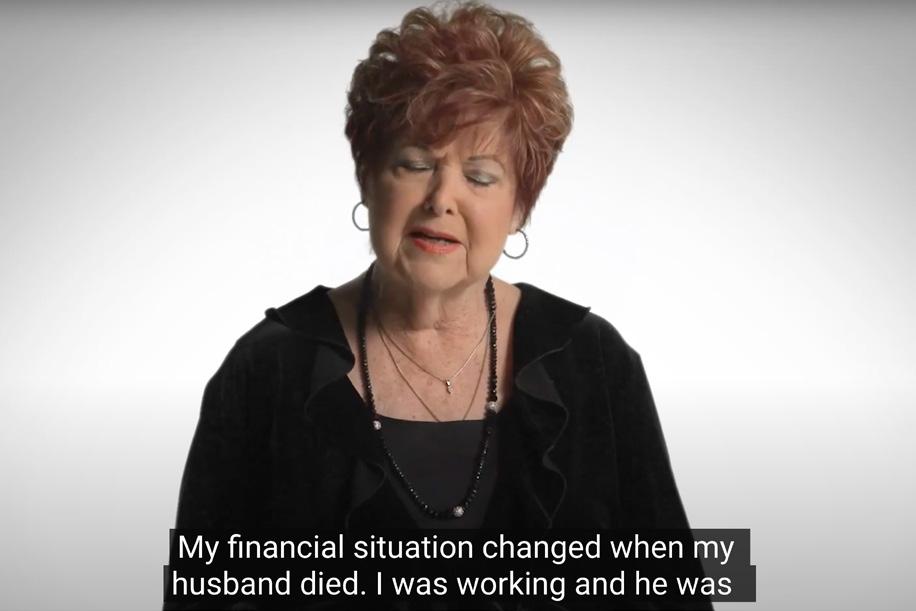

US$12.6bn
US-based online health insurance platform Devoted Health offers medical plans and access to local healthcare providers for Medicare-eligible beneficiaries. An all-in-one medical service focused on the elderly, Devoted Health experienced a major growth spurt in Q3 2021, securing $1.15bn in Series D funding from investors such as General Catalyst, NextView Ventures and Softbank Capital. This investment allowed the fintech to expand into eight new states in October 2022 – including Alabama, Colorado, Oregon, and Hawaii.
US$13.3bn
An early pioneer in the NFT market, OpenSea operates a peer-to-peer platform that allows users to create and trade NFTs in exchange for a 2.5% commission on each sale. Based in New York, the fintech has raised a total of $427.2mn over eight rounds of funding, the latest coming from a Series C round in January 2022. The fintech processes around $3bn in NFT transactions monthly according to Forbes, earning an average of $75mn in revenue per month. OpenSea maintains a leading position in the NFT market despite competition from Coinbase, which launched




Plaid
US$13.5bn
One of Silicon Valley’s most valuable fintechs, Plaid offers a data transfer network and payments platform that connects fintech developers and financial institutions. Designed to democratise financial services, Plaid’s product enables applications to connect with a user’s bank account. The company has raised significant capital since its founding, despite a failed $5.3bn acquisition attempt from Visa in 2021. The deal failed after a US Justice Department antitrust lawsuit challenged the proposed acquisition. Most recently, April 2023 saw Plaid enhance its product offering further with the launch of a Real Time Payments network to speed up bank payments.



















































Blockchain.com
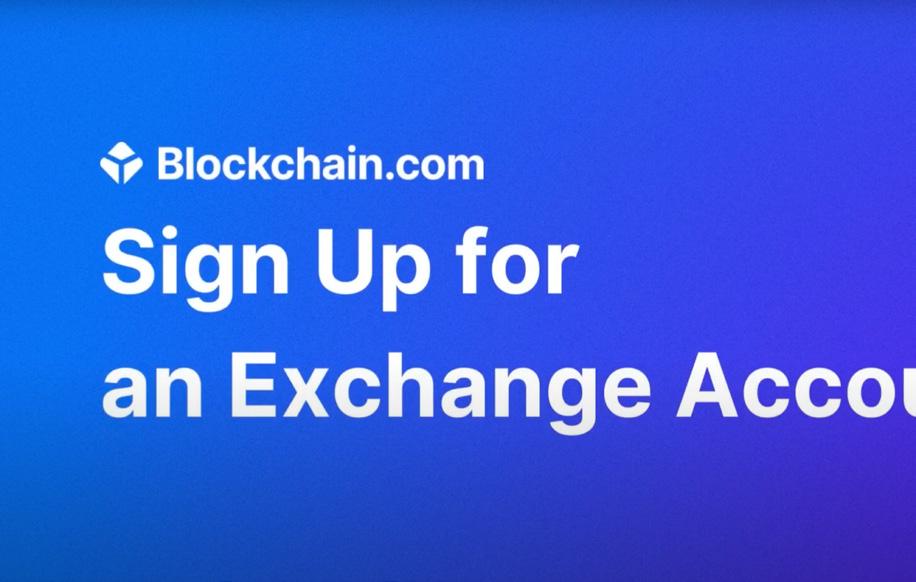

US$14bn
UK-founded cryptocurrency platform Blockchain.com boasts over 50mn customers, who use the domain to buy, sell and hold different cryptocurrencies. The company’s market valuation reached $14bn after it raised new funding in March 2022 from backers including Lightspeed Venture Partners and Baillie Gifford. At the time, the funding round more than doubled the company’s valuation. However, after cryptocurrencies entered a bare market following one of its biggest historical crashes in June 2022, it was reported that Blockchain.com had been considering a strategic “down round” of fundraising, reducing its value significantly to between $3bn-4bn.








Ripple US$15bn
Another of the market's biggest payment settlement systems and money transfer networks, Ripple sits high on the tree as the fifth largest fintech unicorn by market valuation. The company has raised a total funding of $293mn since its founding and is a leading platform for cryptocurrency trading. The company uses its proprietary cryptocurrency XRP to facilitate transactions on the Ripple network, a product that has been at the centre of a legal battle between the fintech and the US Securities and Exchange Commission (SEC). The SEC argues that XRP is an investment contract acting under the guise of a cryptocurrency. Despite the yearslong legal case beginning in 2020, Ripple’s valuation has remained strong, with two rounds of Series B funding taking place in 2021.


Business Insider called Chime the largest single equity challenger bank in 2020, having raised $500mn in a single round of funding to take its market valuation up to $5.8bn. Fastforward to today and the fintech’s market valuation has soared further still after $750mn of Series G funding was raised in 2021. Lead investors Sequoia Capital Global Equities were joined by firms General Atlantic and Tiger Global Management in growing the fintech’s market capital to $25bn as of Q4 2022. Founded in 2012, Chime offers fee-free mobile banking services provided by either The Bancorp Bank or Stride Bank, earning revenue from the collection of interchange fees.

Revolut US$33bn

British neobank Revolut is a leading fintech specialising in mobile banking, foreign exchange, and money remittance. Since its founding in 2015, the fintech has been through 18 rounds of funding, with a significant $800mn raised in July 2021 – making Revolut the most valuable UK tech startup at the time. 2021 marked the company’s first-ever year of profit, generating £26.3mn ($32.7mn); it also reported positive Adjusted EBITDA of £100.3mn. More recently, 2023 has seen Revolut expand its offering by rolling out joint accounts and group chats in European markets.


Checkout.com
US$40bn

Checkout.com is Europe’s most valuable fintech startup with a valuation of $40bn as of Q4 2022. Headquartered in London, Checkout.com is a payments processor for other companies, with clientele including household brands Netflix and Pizza Hut, as well as the cryptocurrency platform Coinbase. The company surpassed Revolut as the UK’s most valuable fintech unicorn in January 2022 after announcing a funding round exceeding $1bn, with the Qatar Investment Authority among its lead financial backers.

Céline Dufétel was appointed as Checkout.com’s new president in early 2023, laying out the company’s expansion plans for the US market to rival its North American counterpart Stripe. This challenge has seemingly been made more difficult due to a series of departures from the company’s executive team.
Regardless of internal change, Checkout.com remains Europe’s leading fintech unicorn, flexing its muscles in May 2022 with the acquisition of French identity verification service Ubble.





Founded in 2010 by a pioneering pair of Irish brothers, Stripe takes the gong as the biggest fintech unicorn by market valuation. The company provides APIs for money transfers, accepting credit cards and for subscription management.
Publicly valued at $95bn as of Q4 2022, this figure has faced some recent scepticism after a round of Series I funding valuing Stripe at $50bn saw it raise $6.5bn in March 2023. Andreessen Horowitz, Baillie Gifford, and Founders Fund were among the lead investors in this public investment round. In its annual update published in April 2023, the fintech says it processed financial transactions totalling $817bn for the full-year 2022 – a 26% rise from 2021. Stripe says it now supplies over 100 companies that process over $1bn in payments using its platform, with overall clientele up 19% year-on-year.



















































